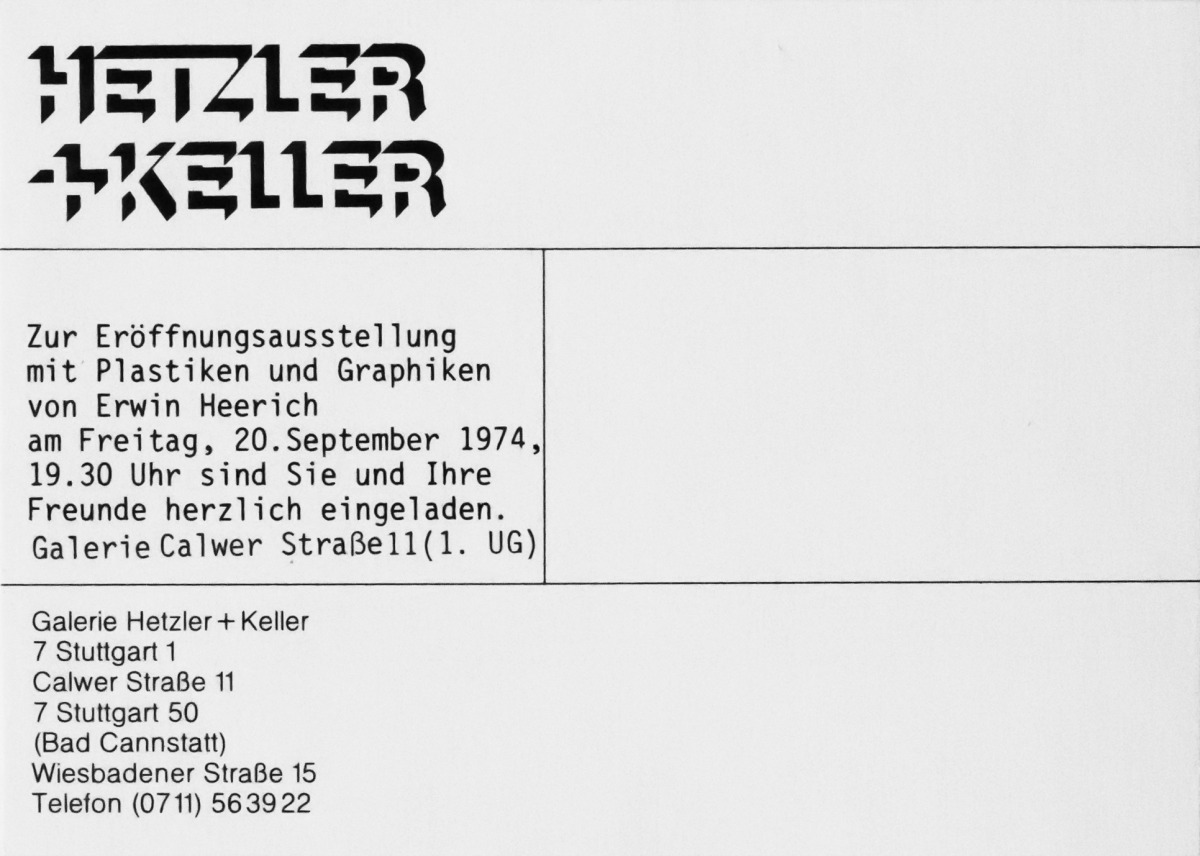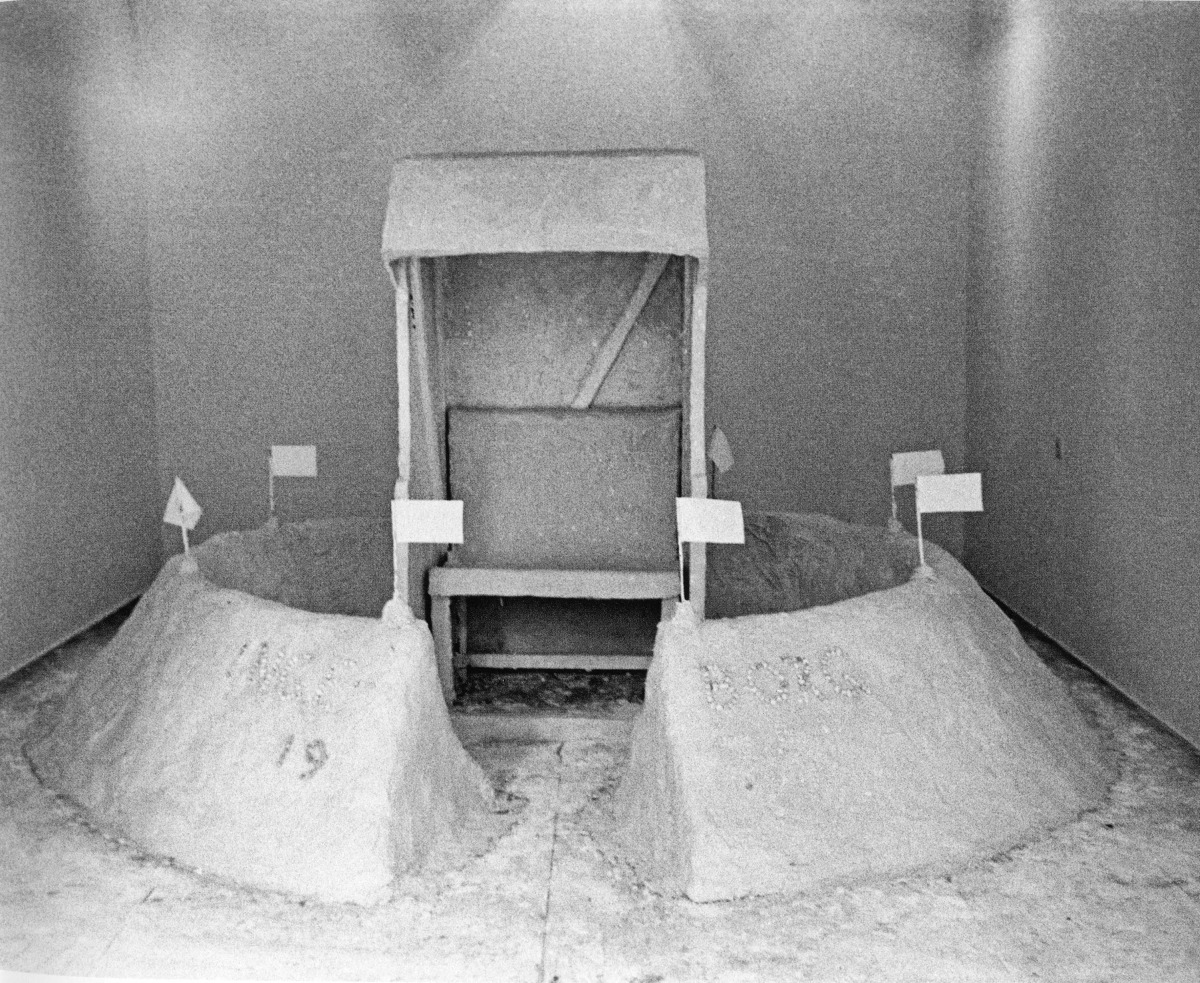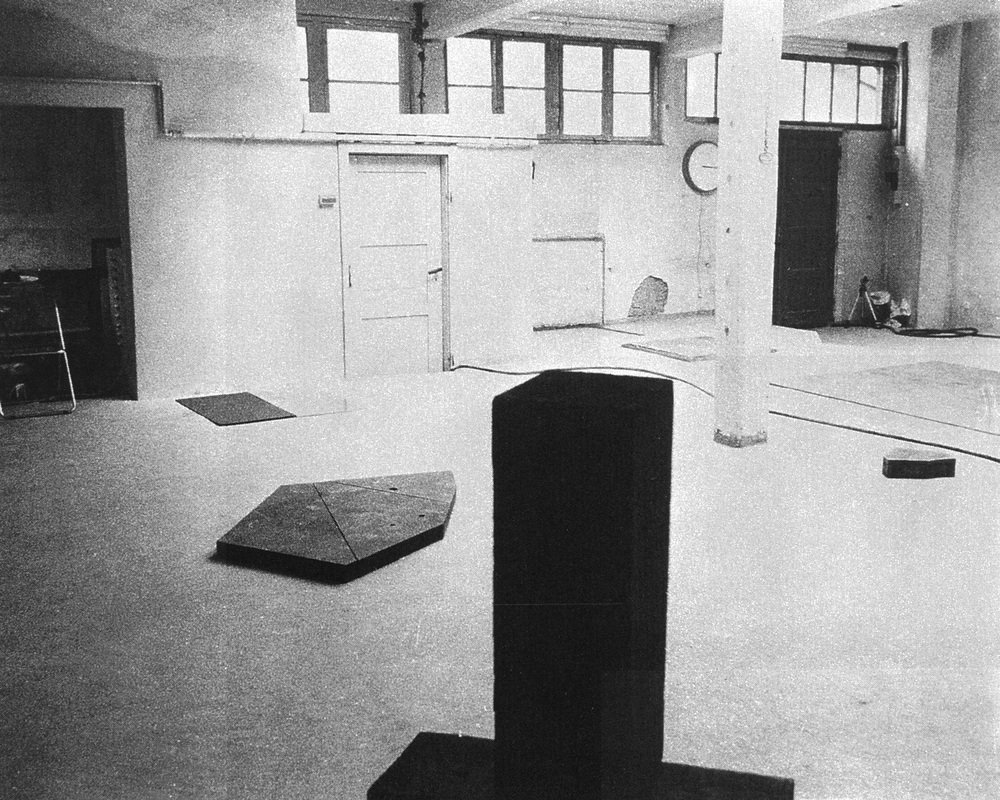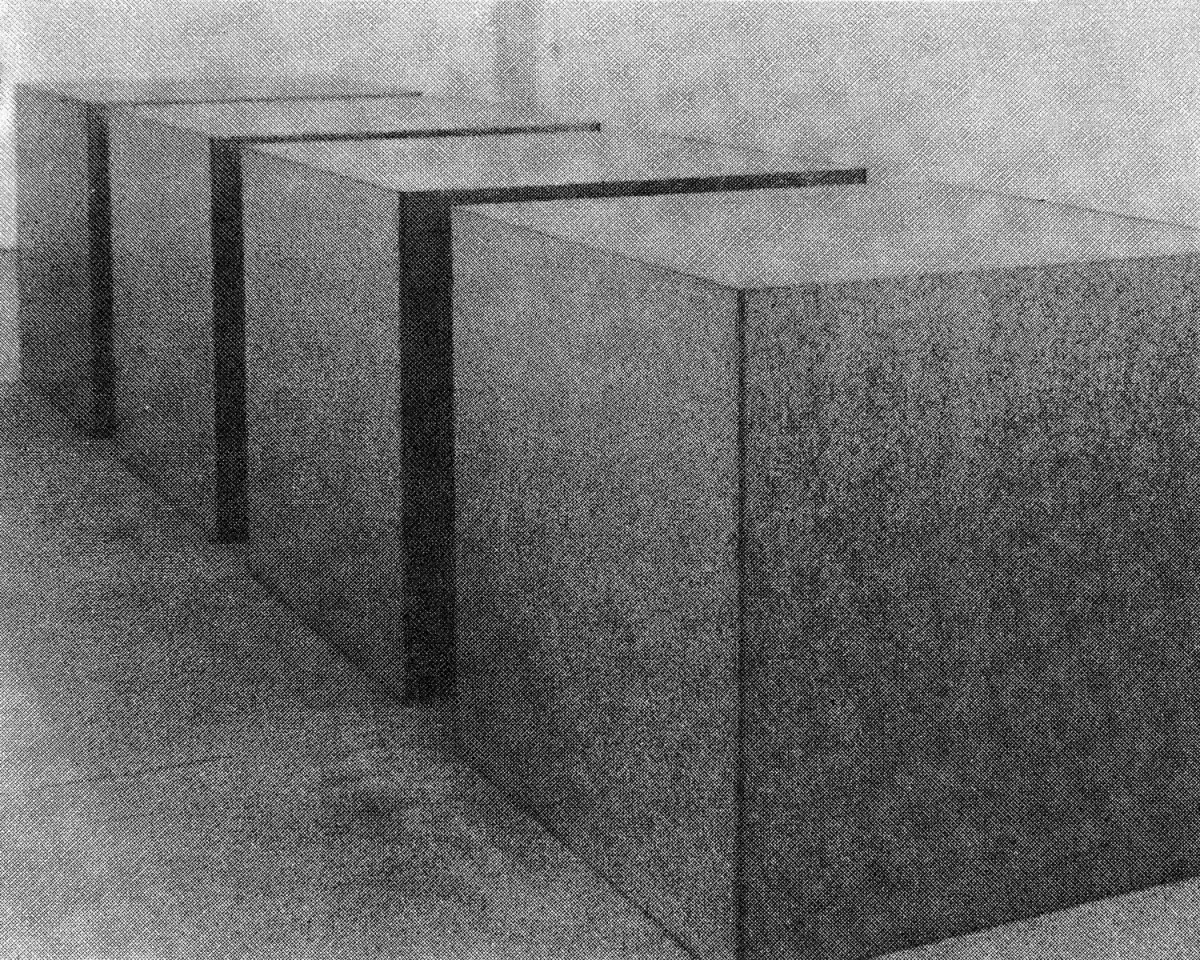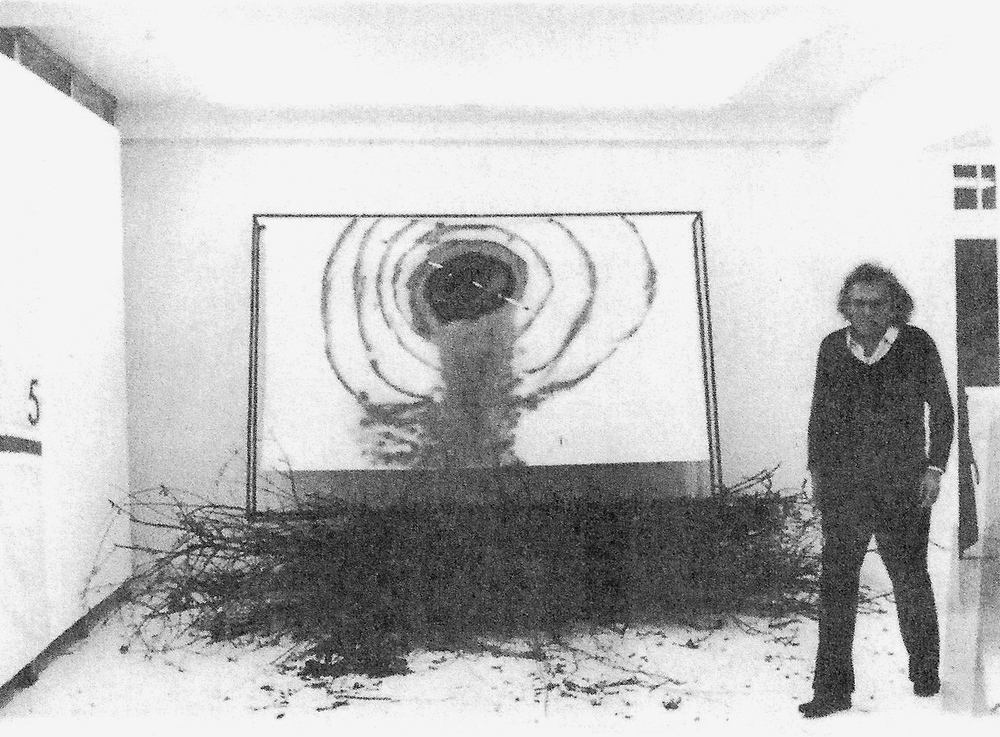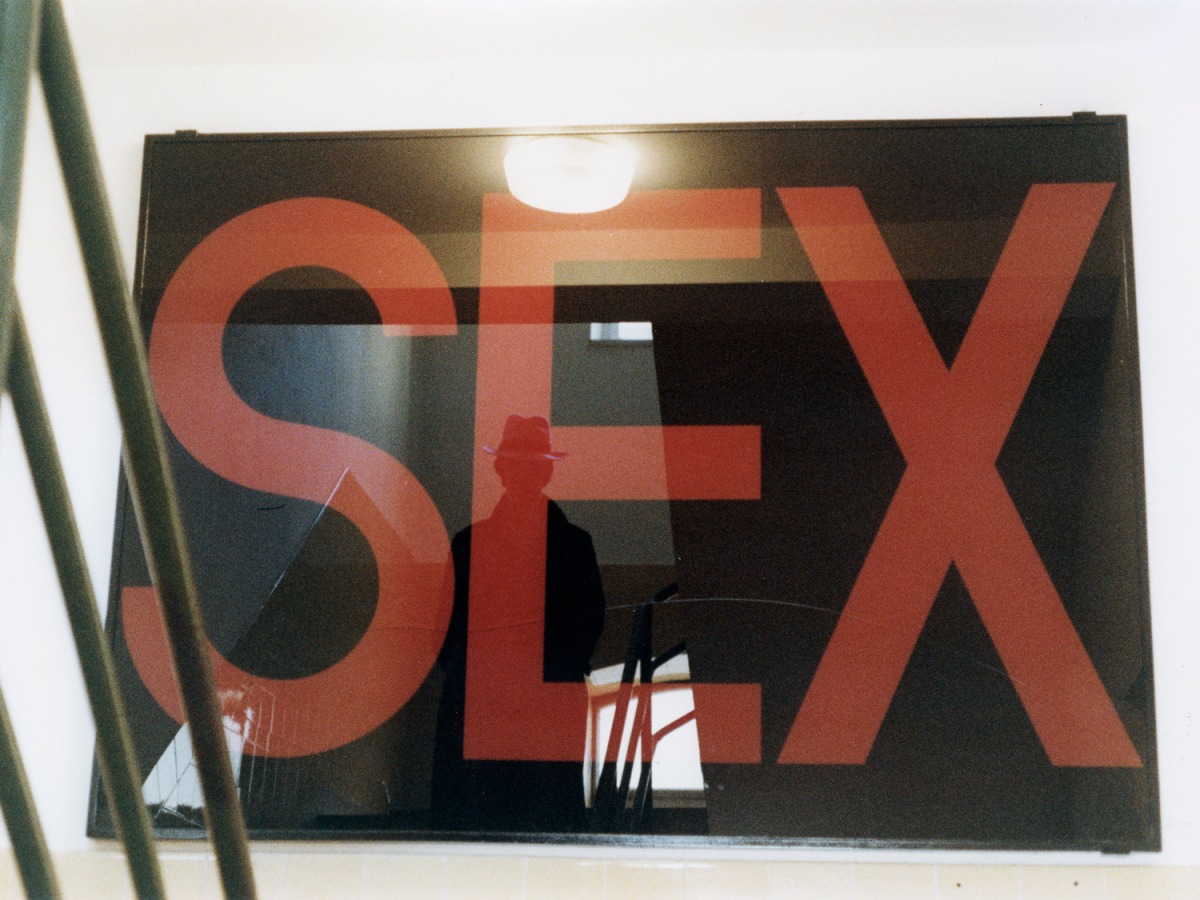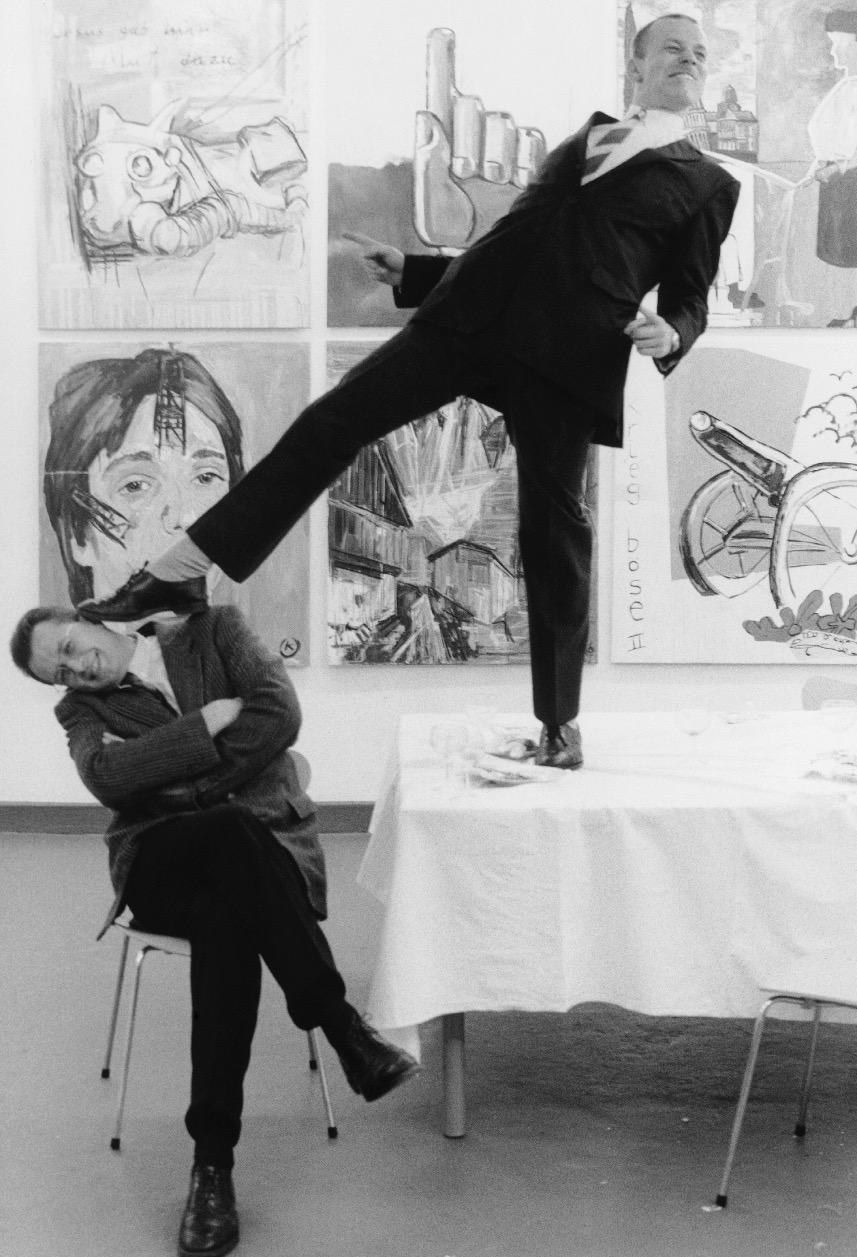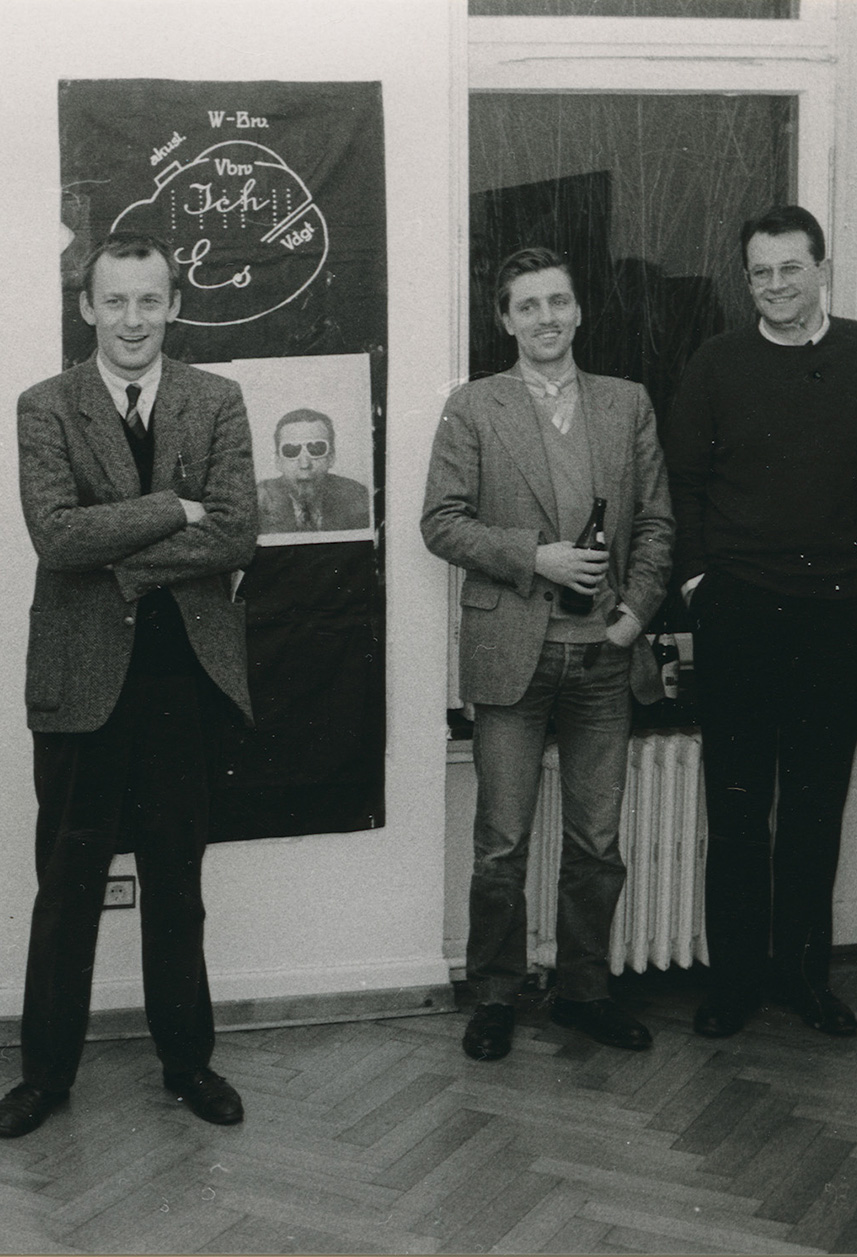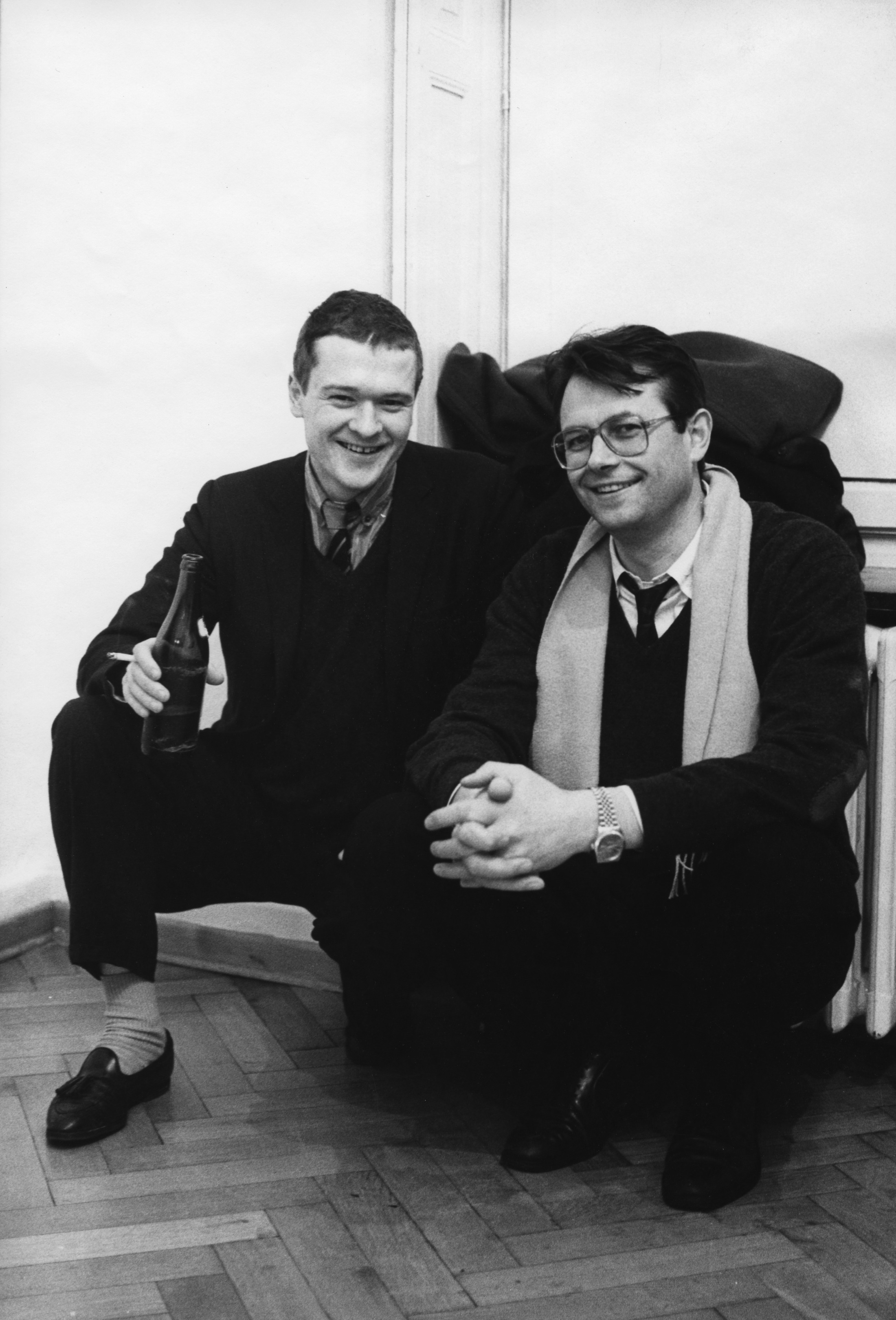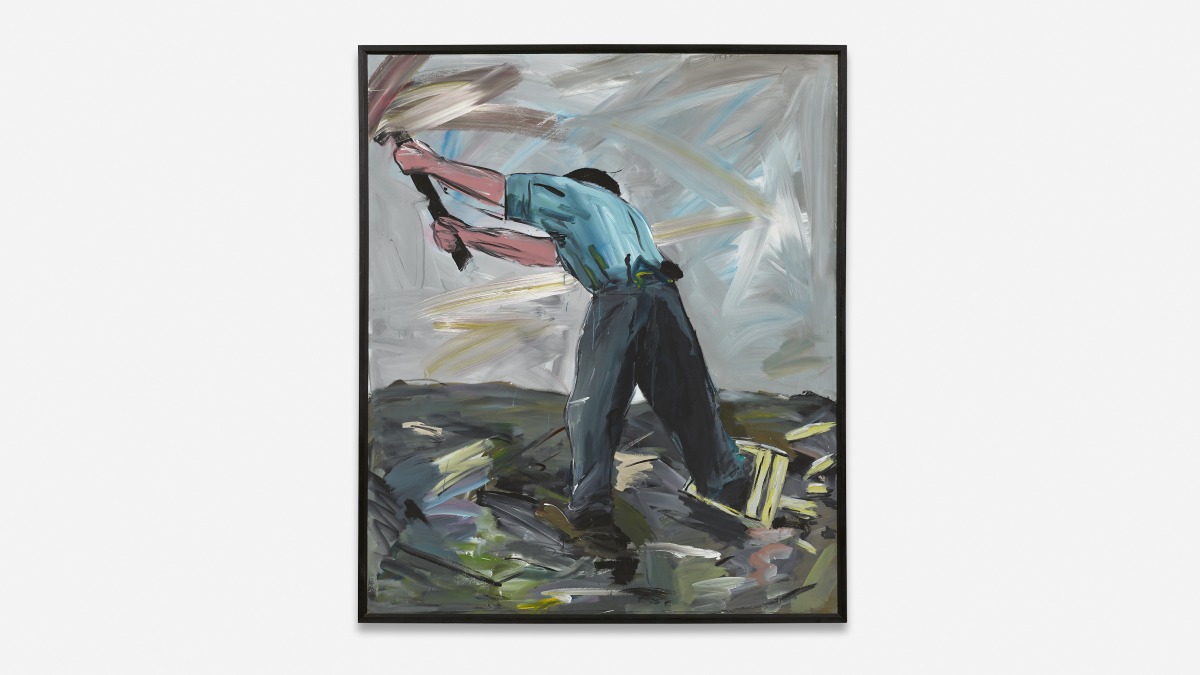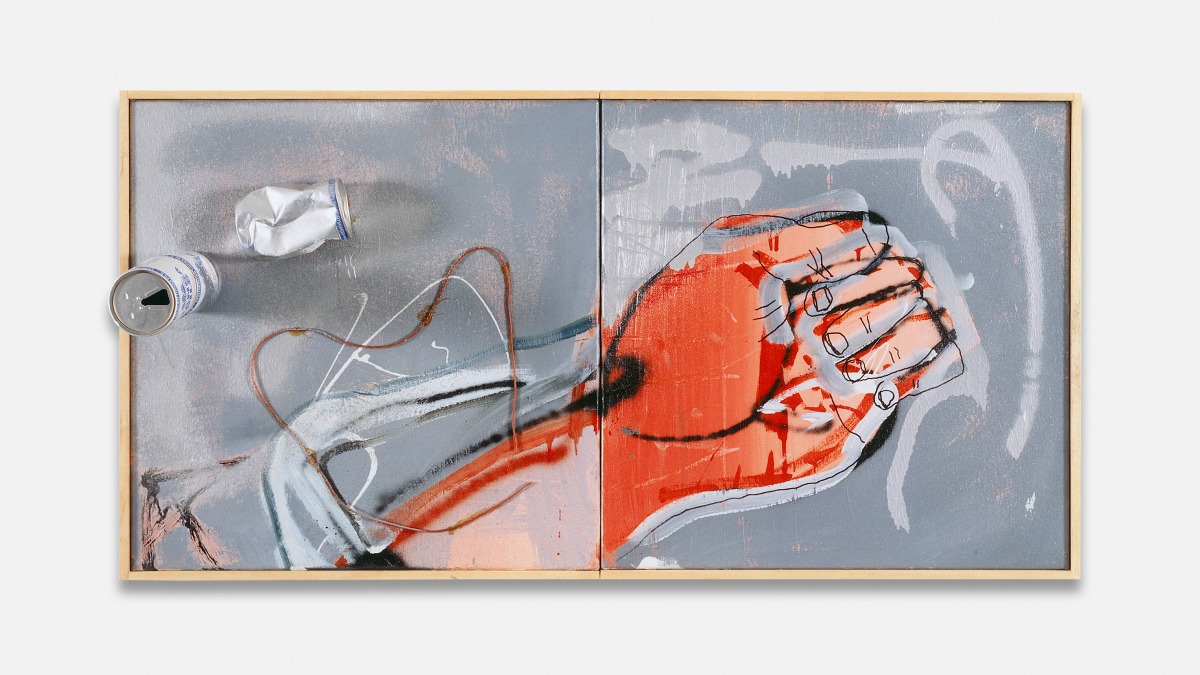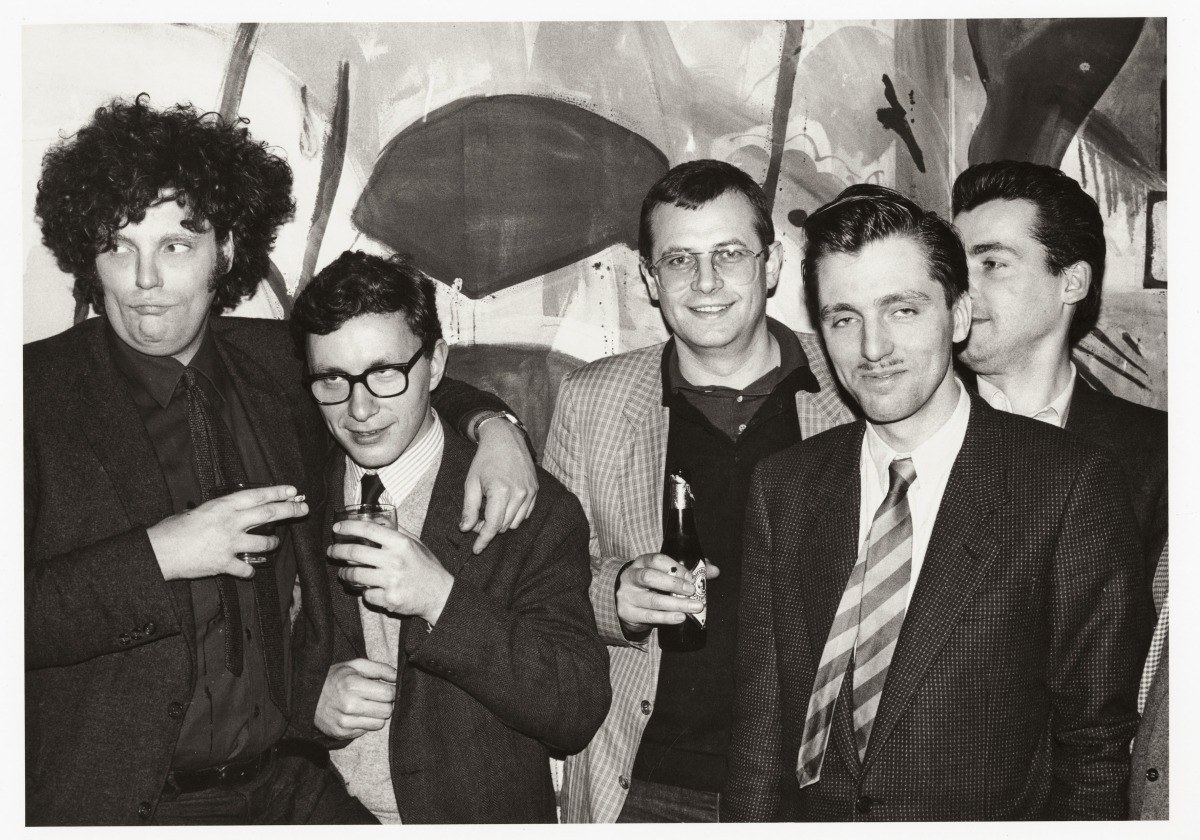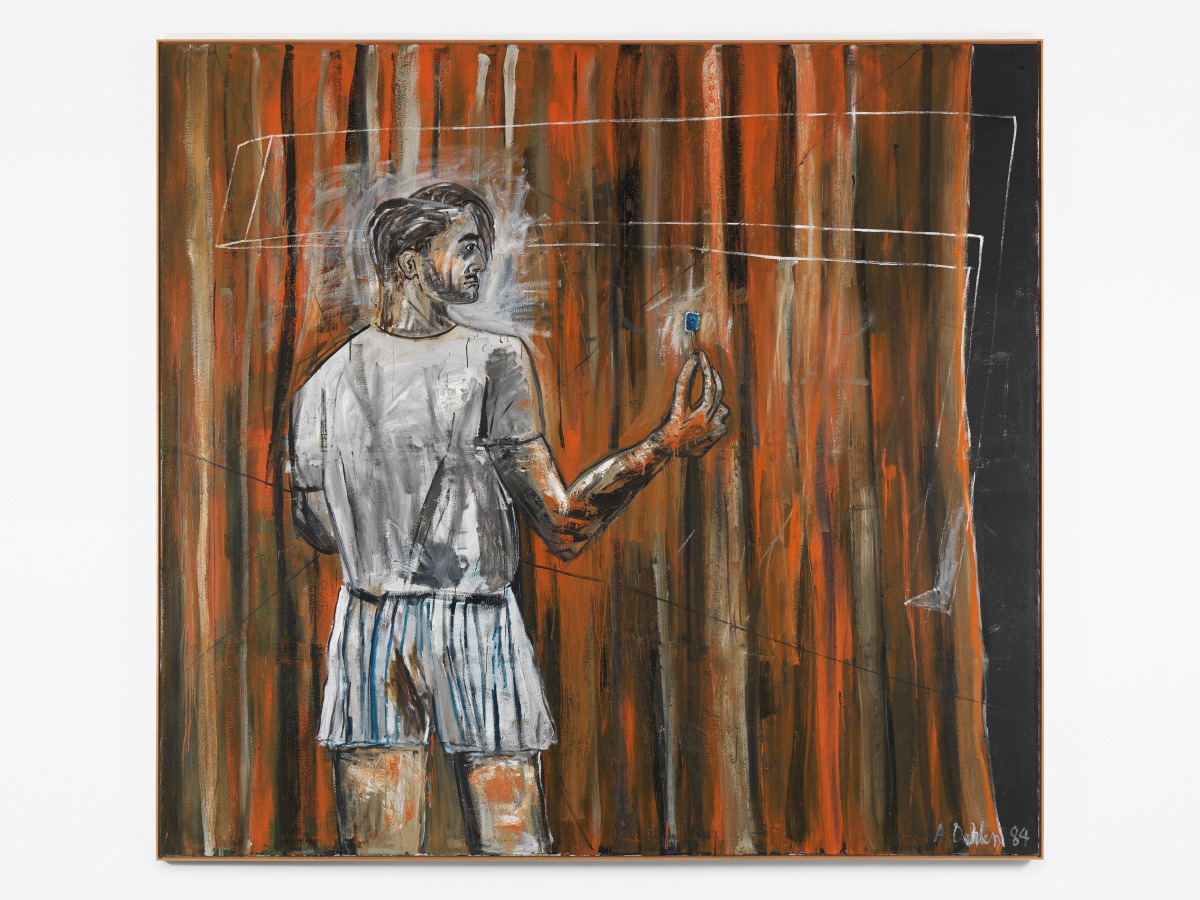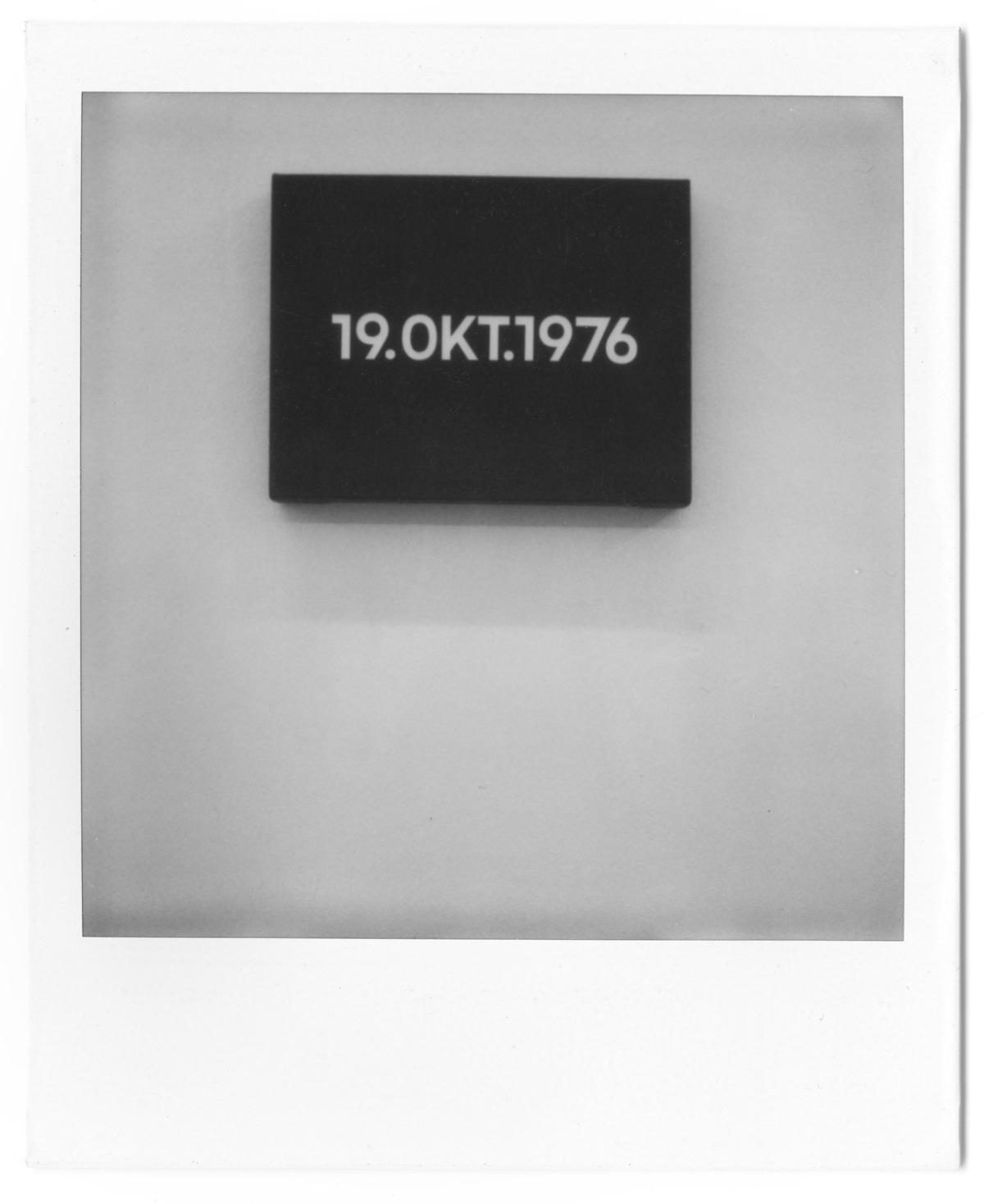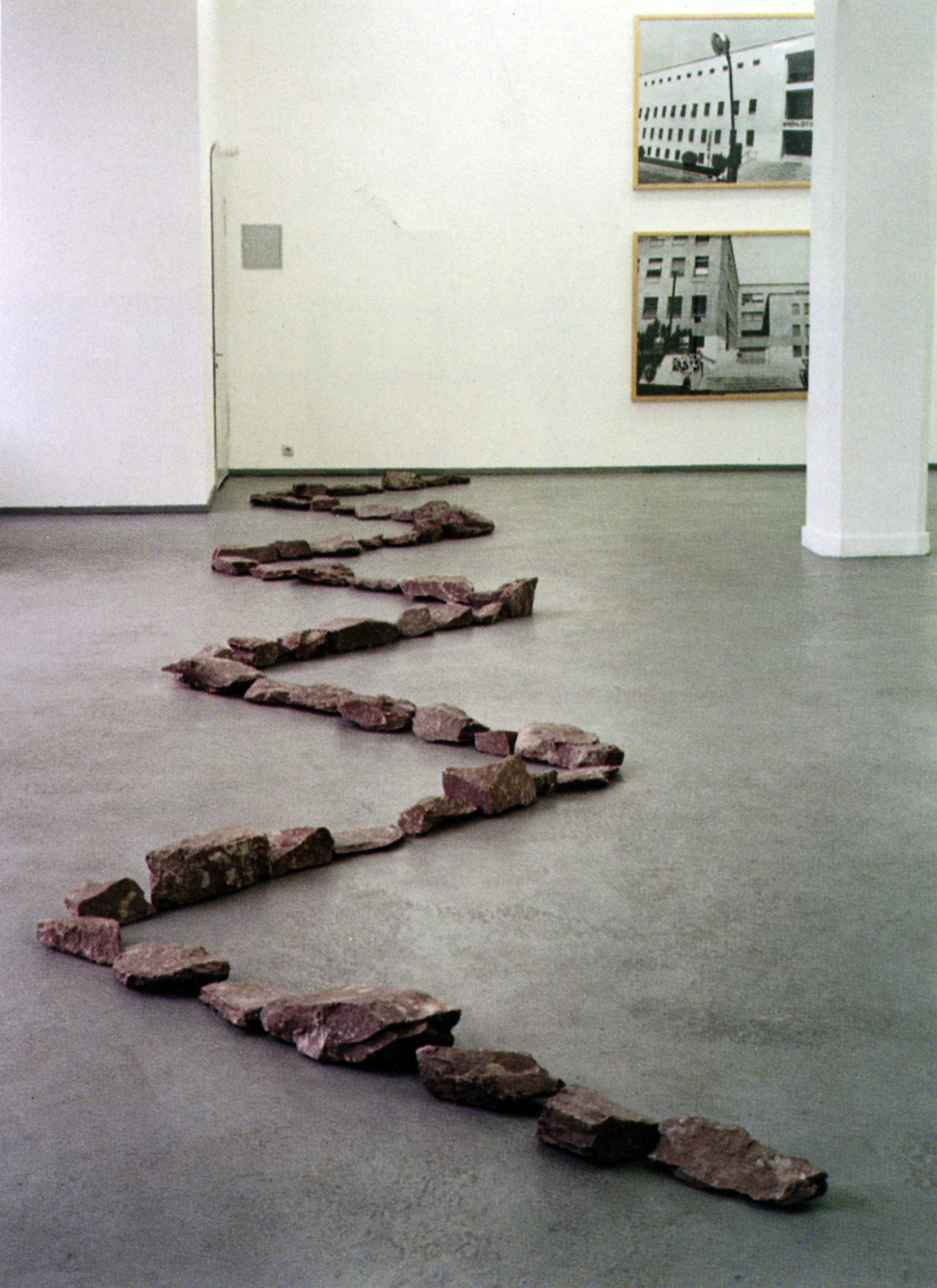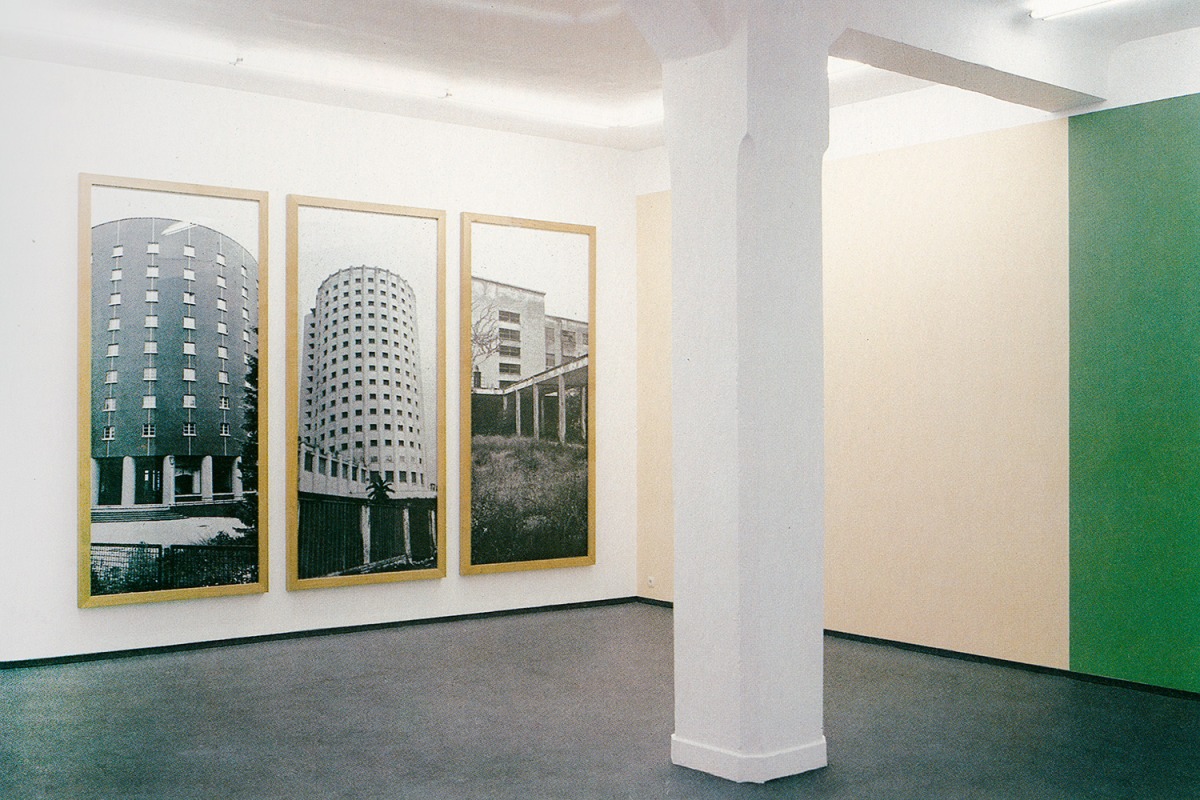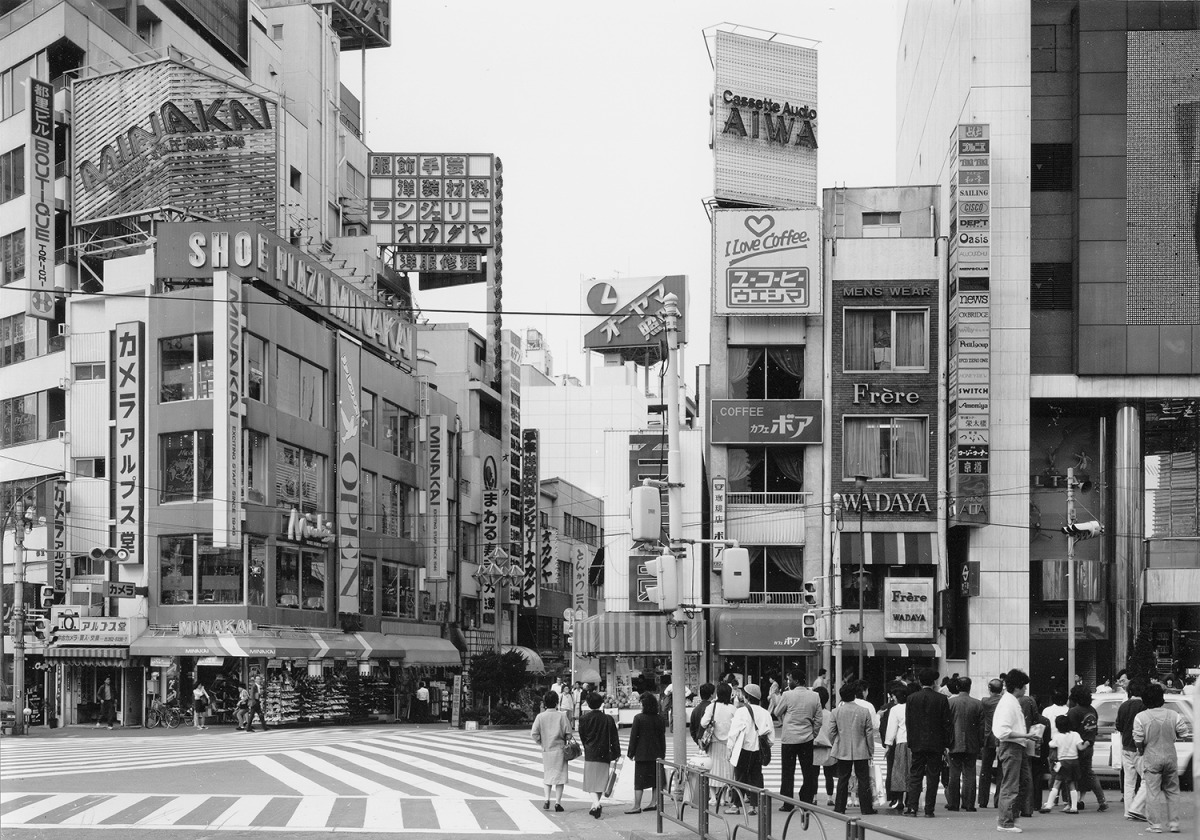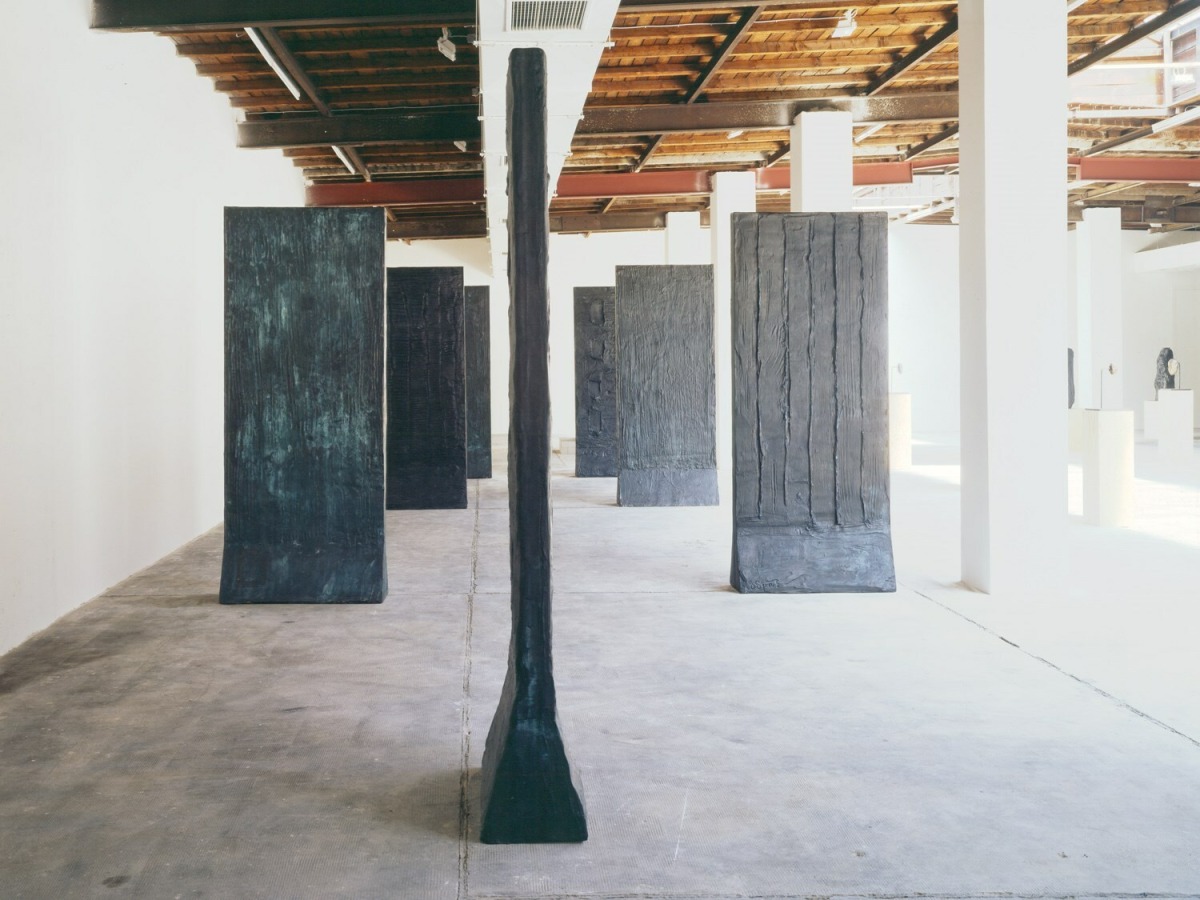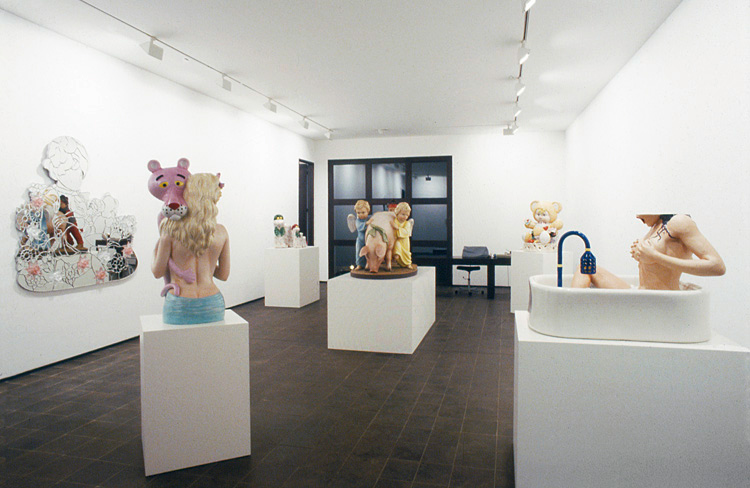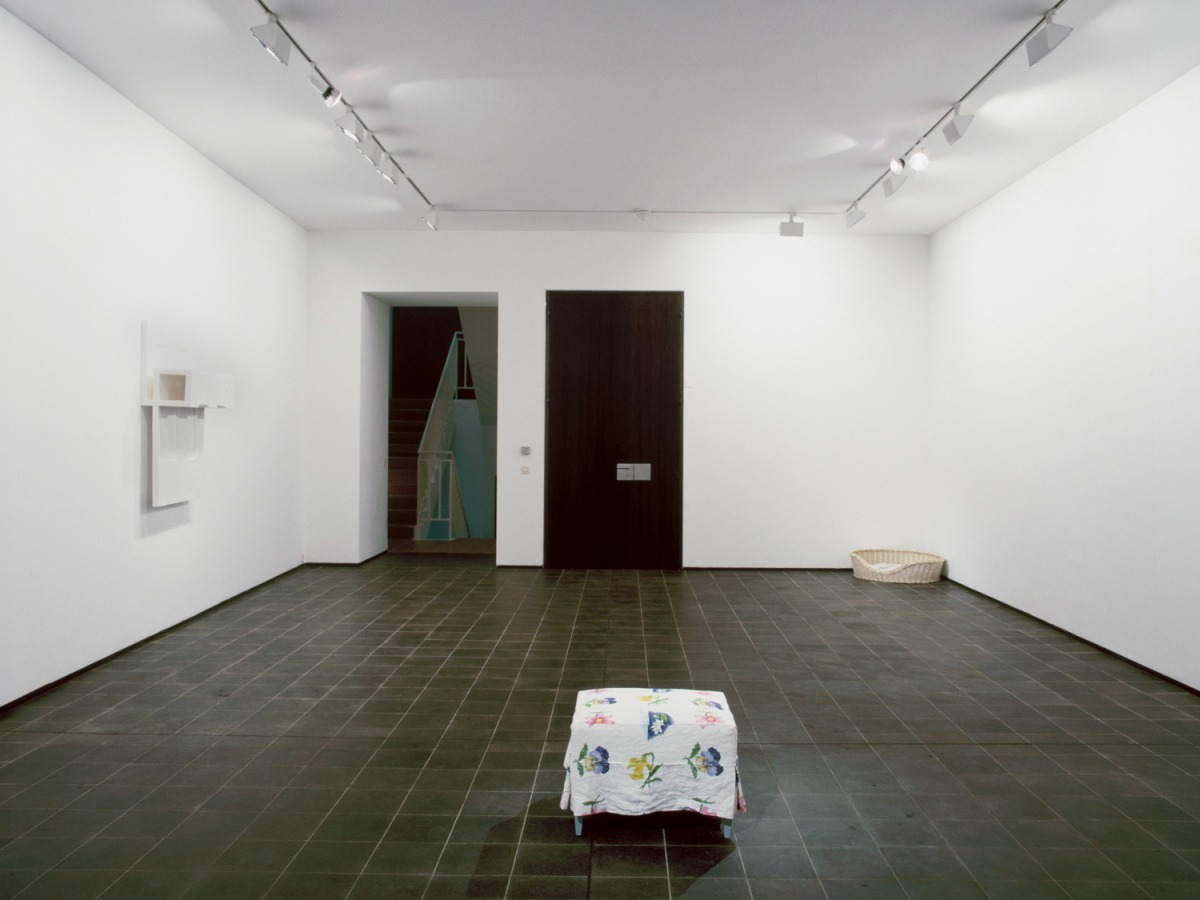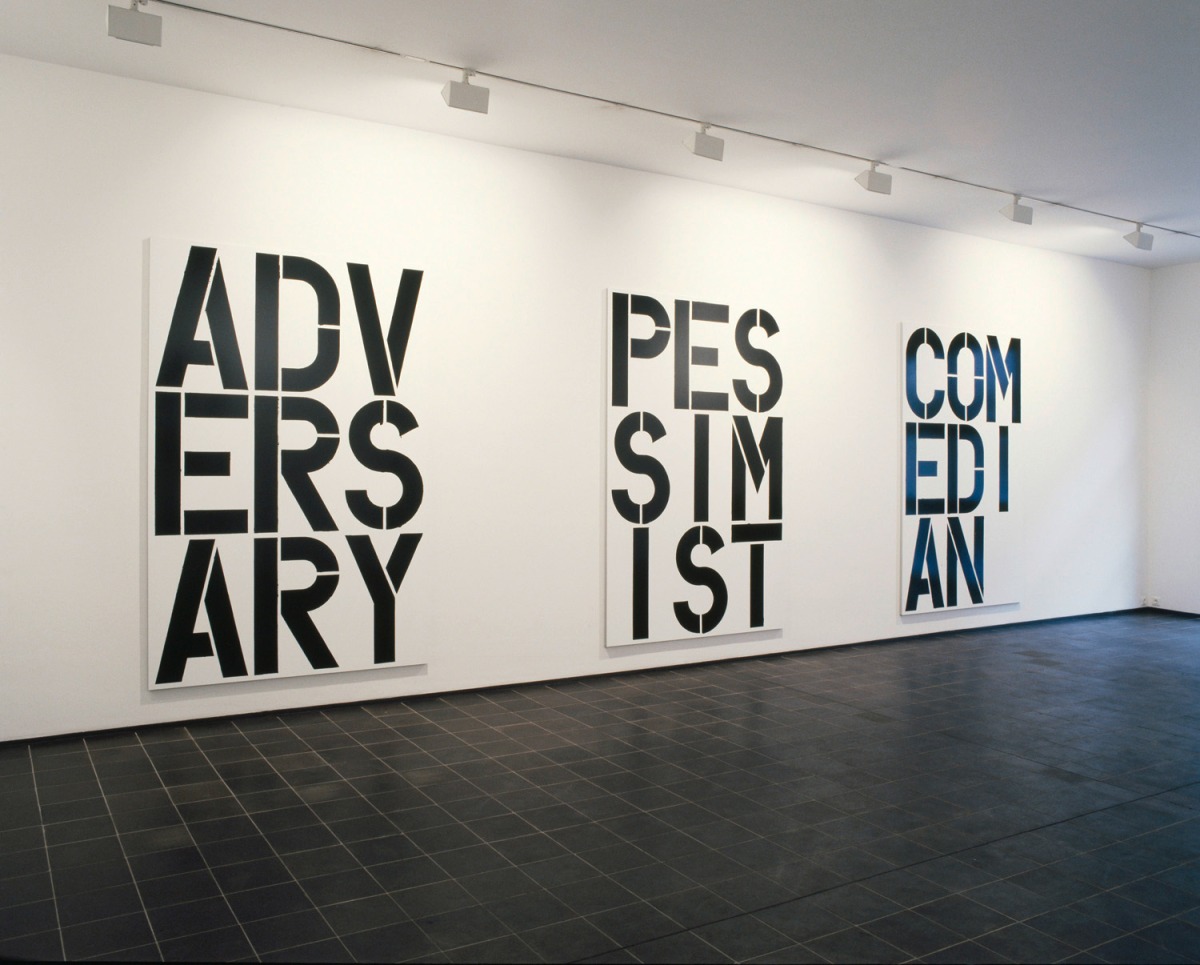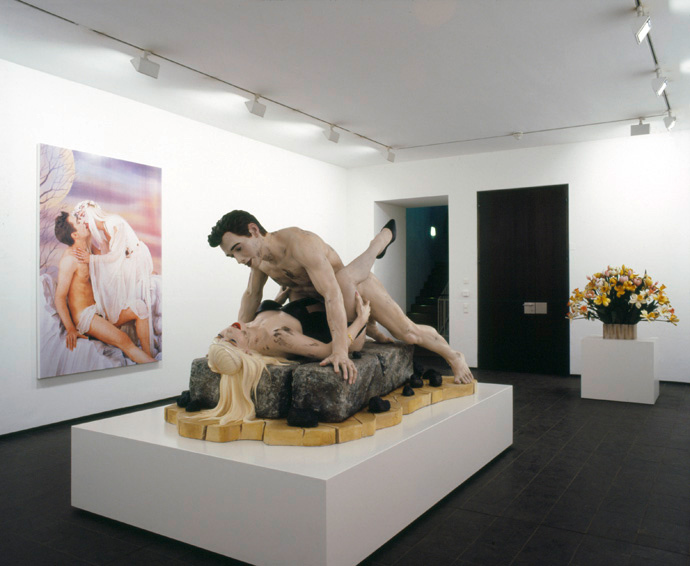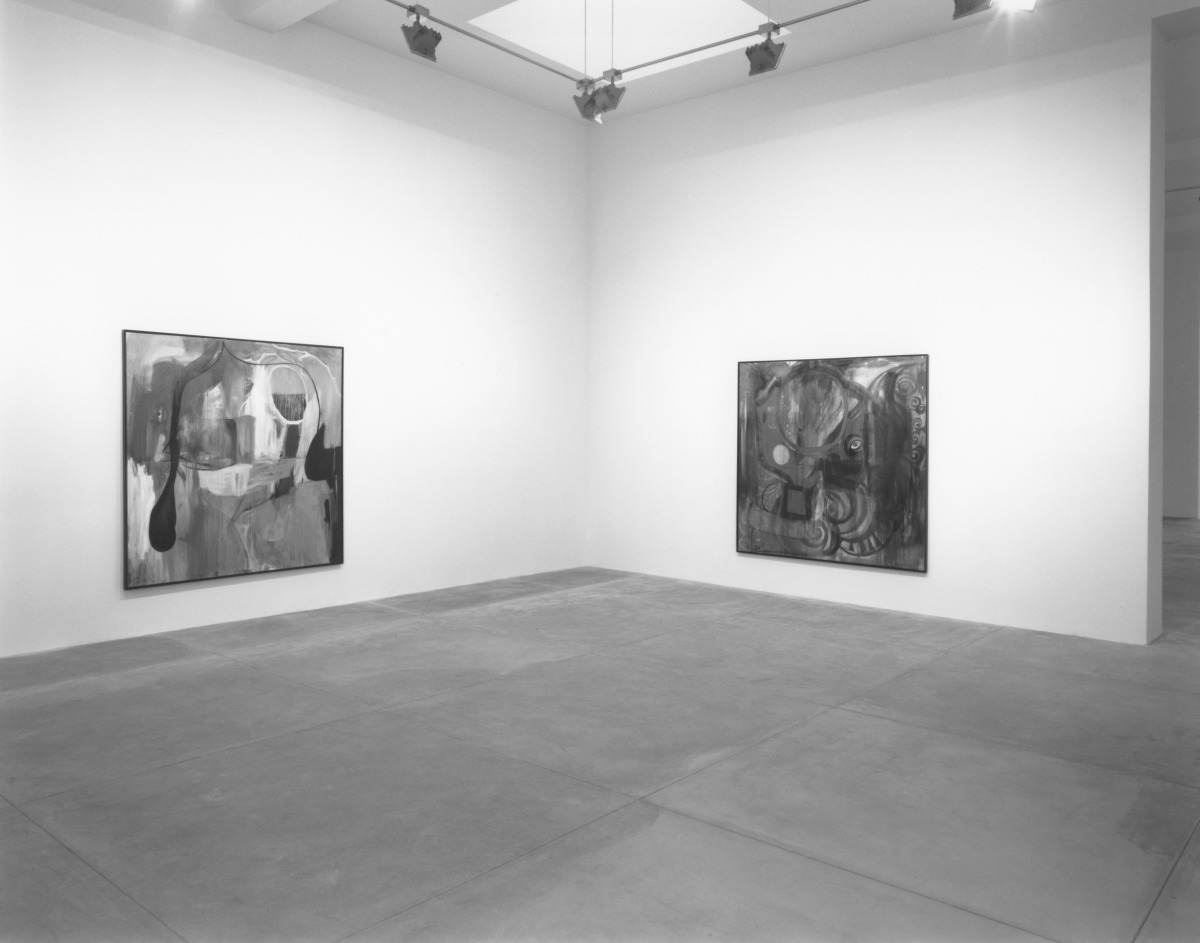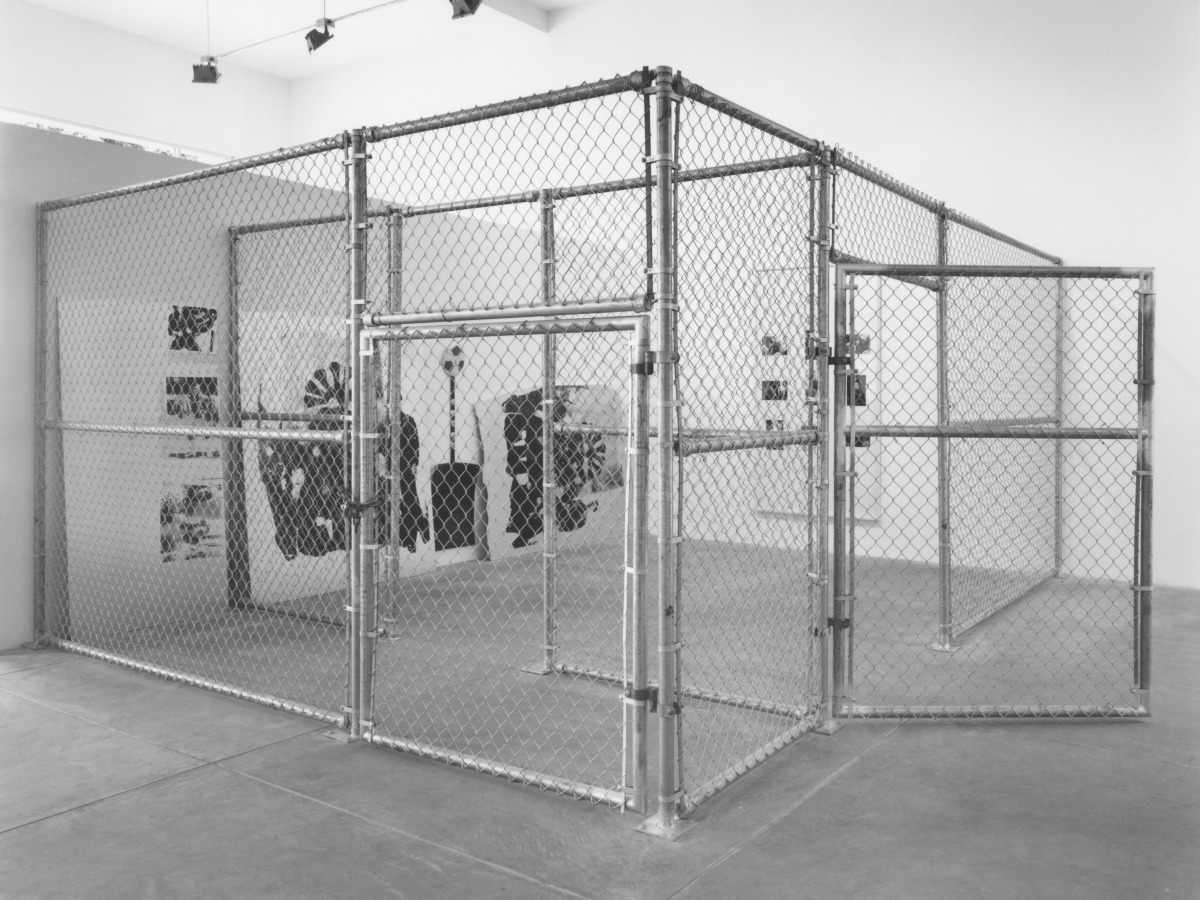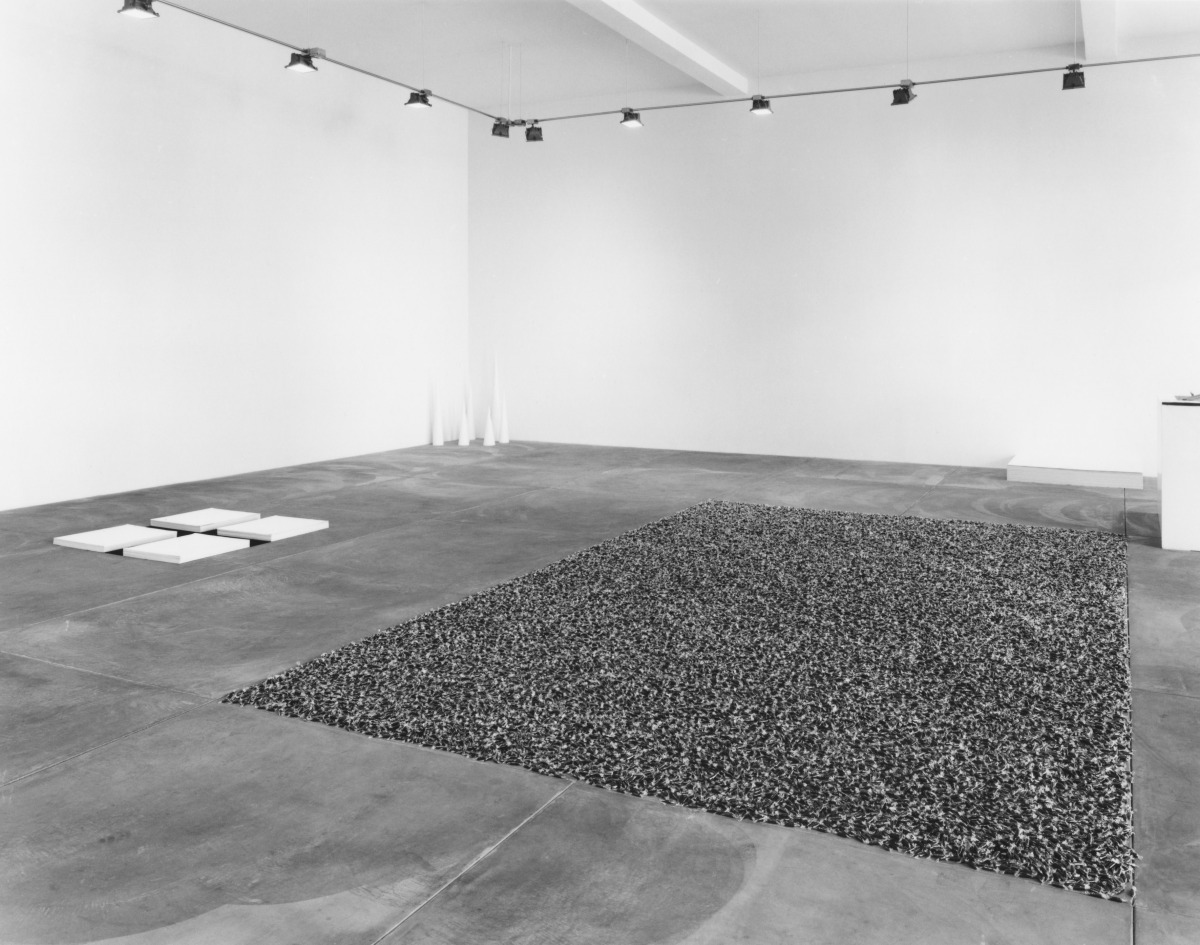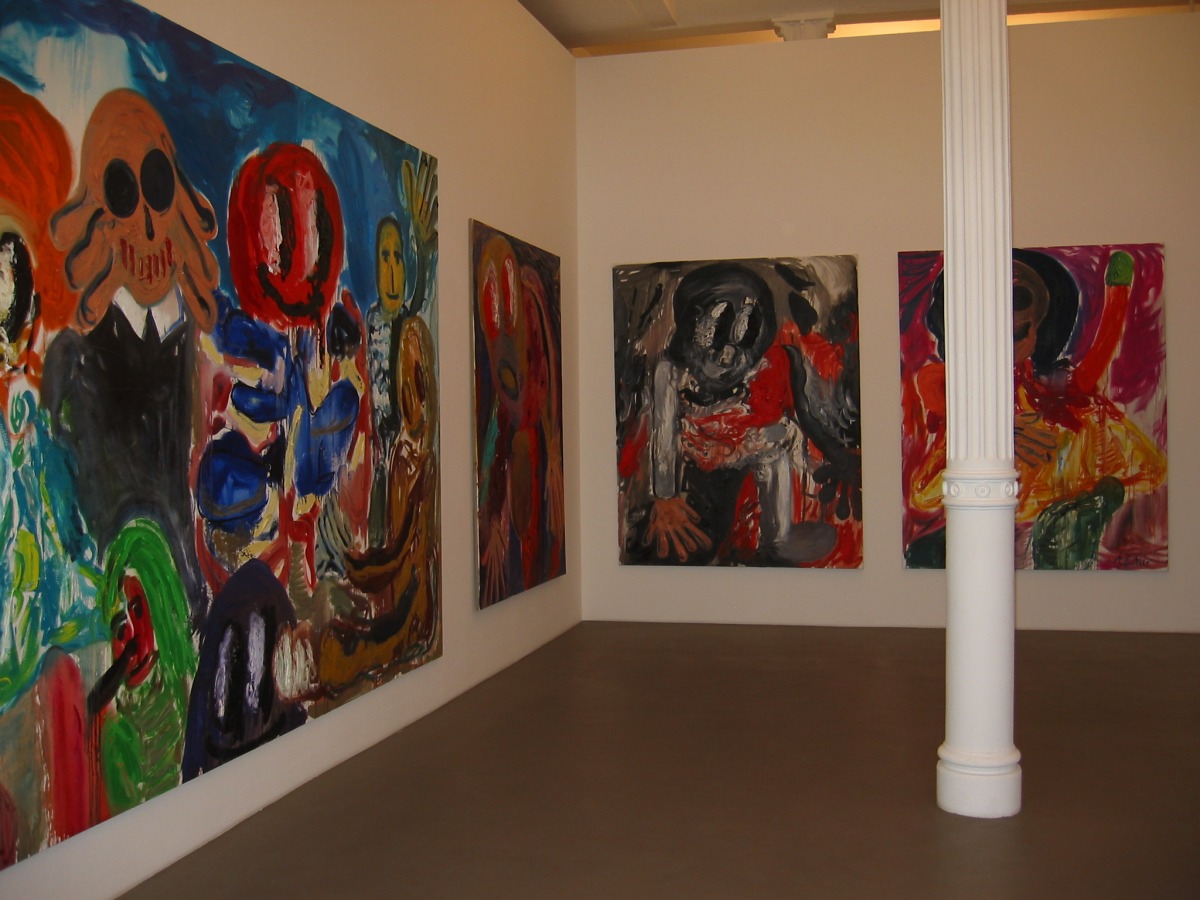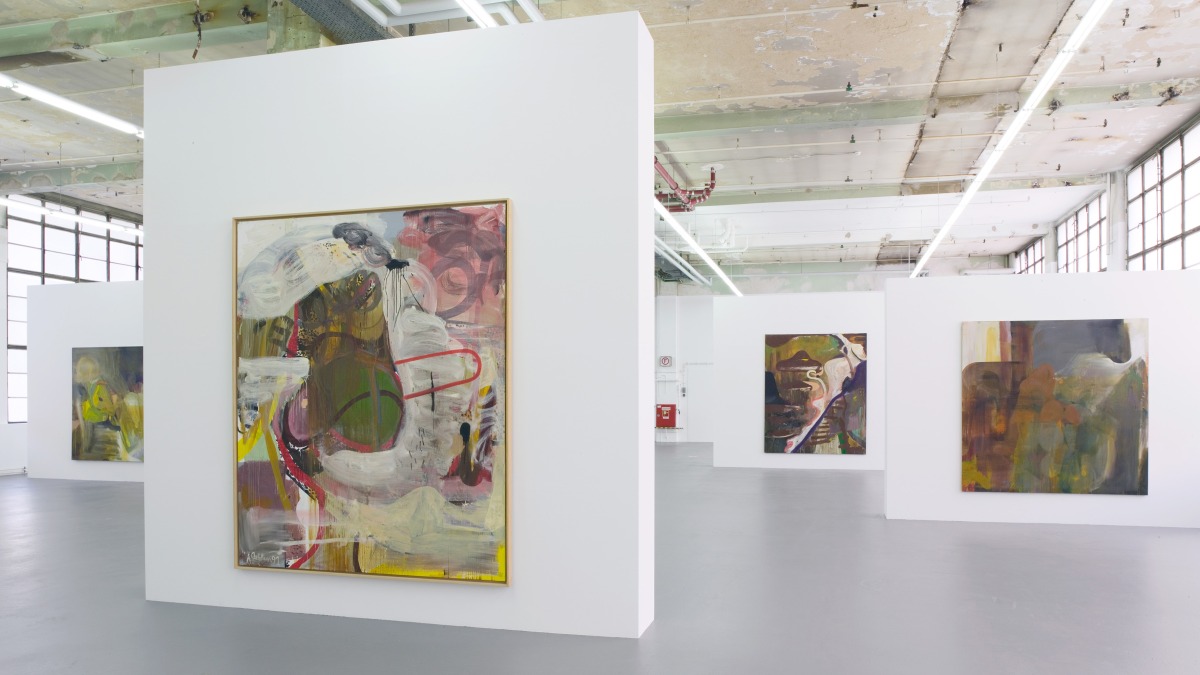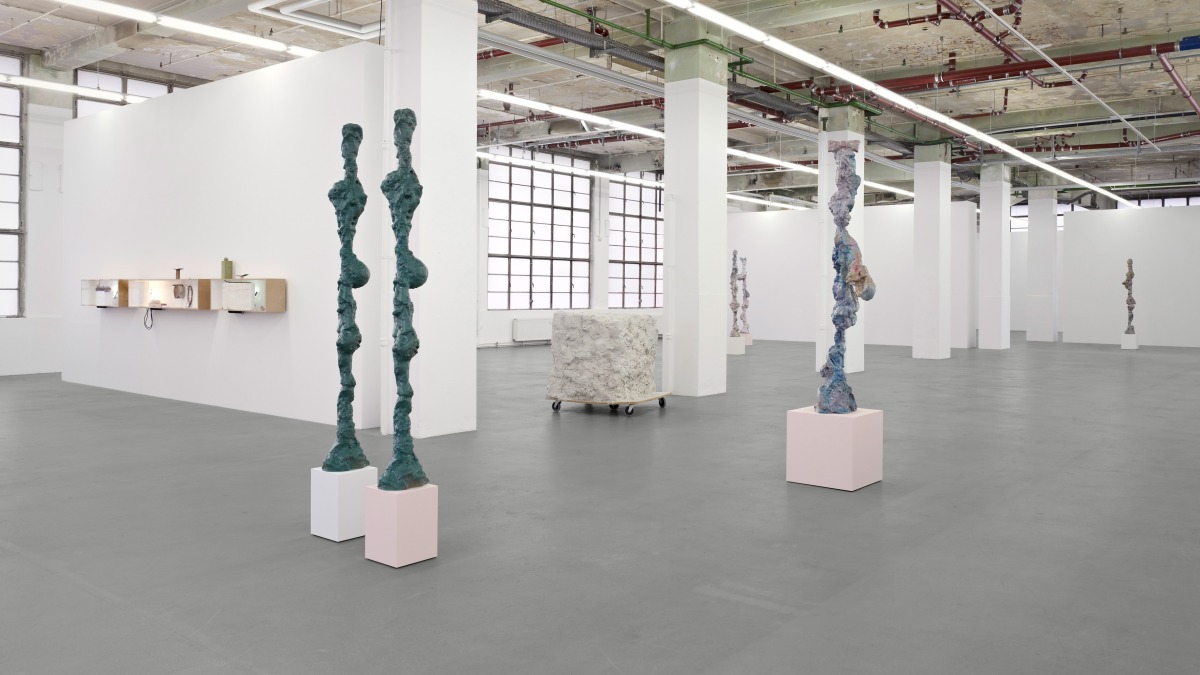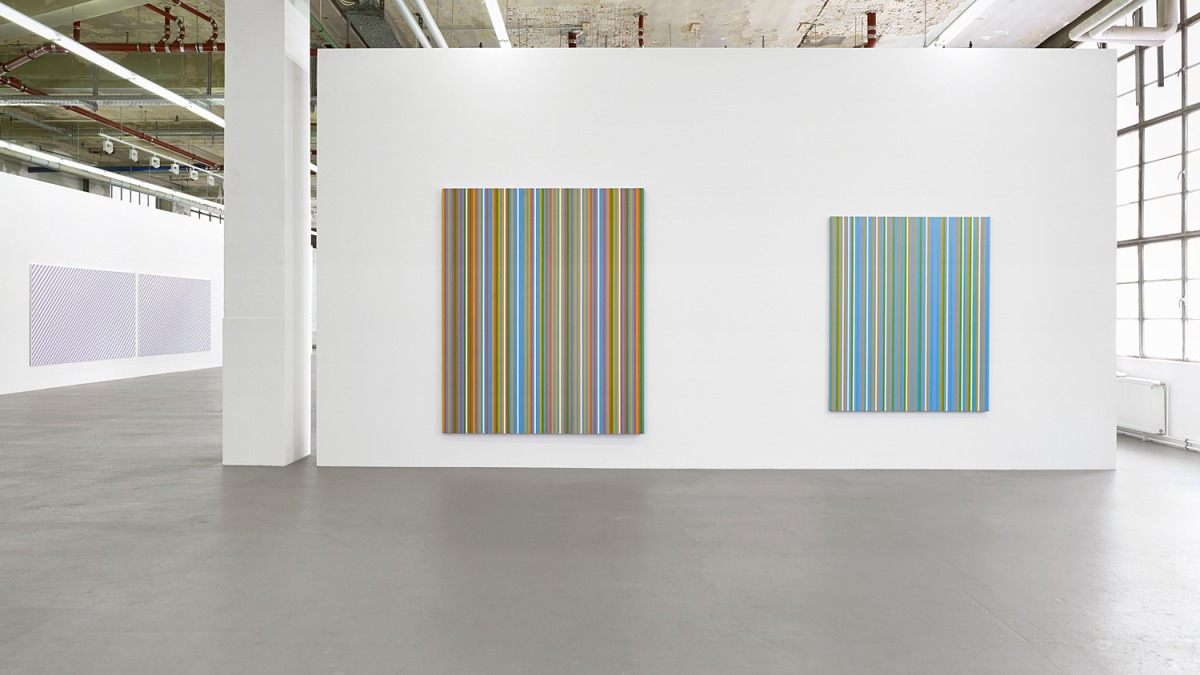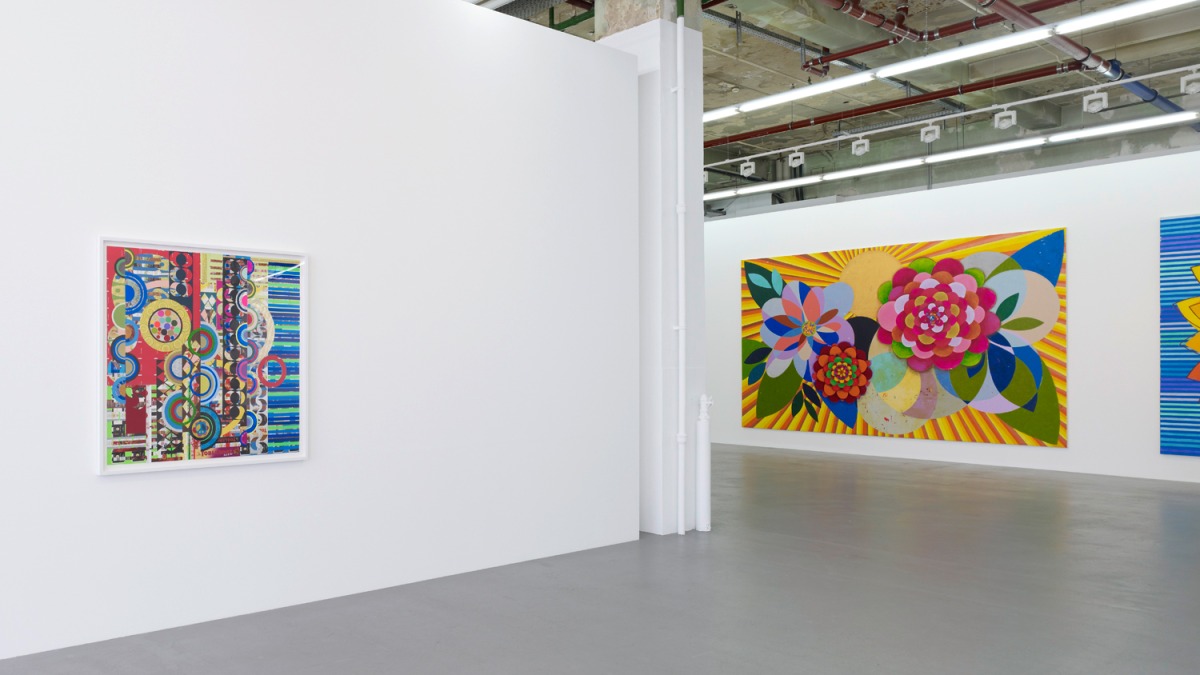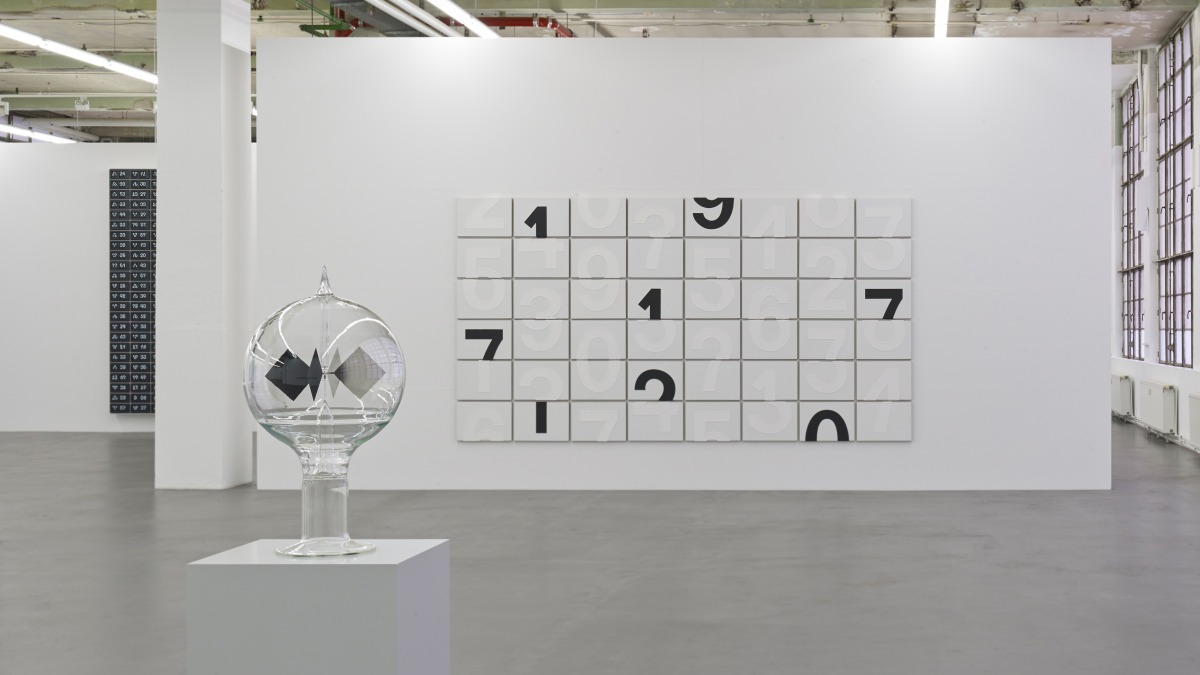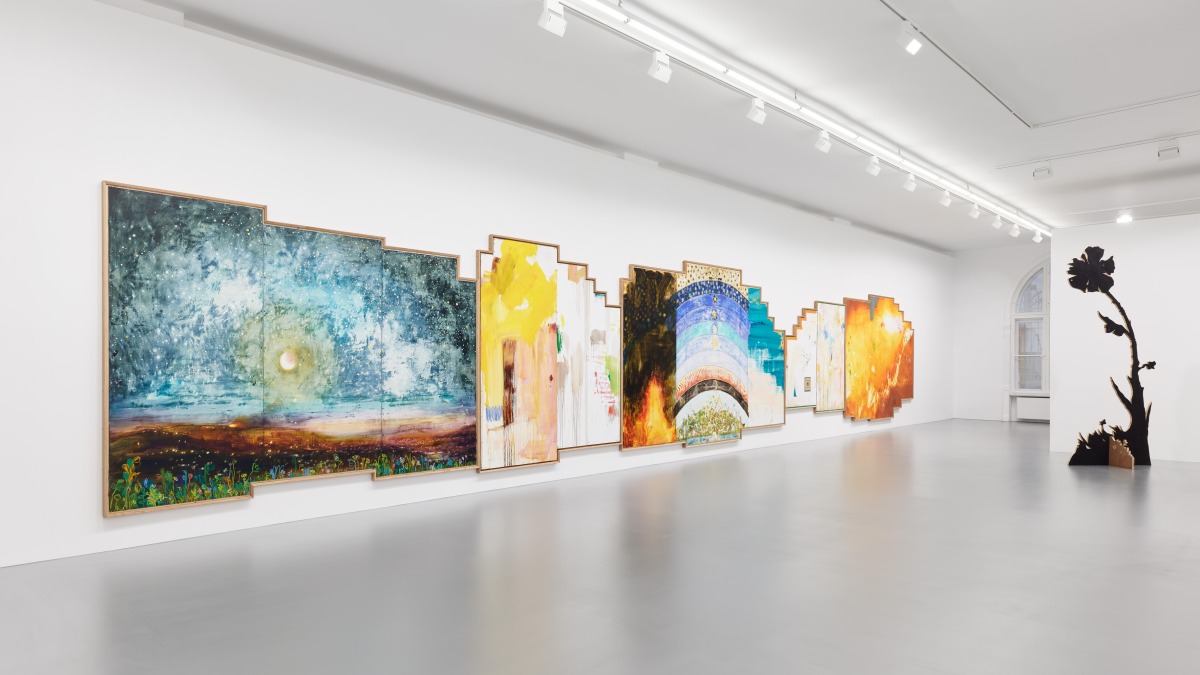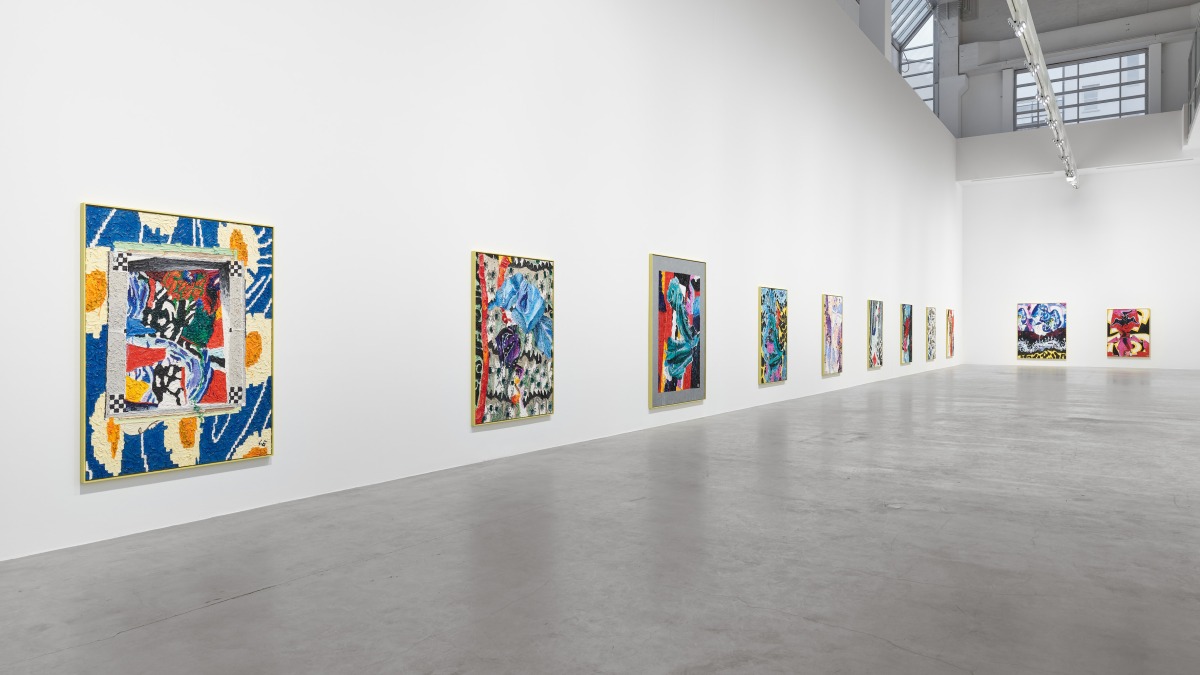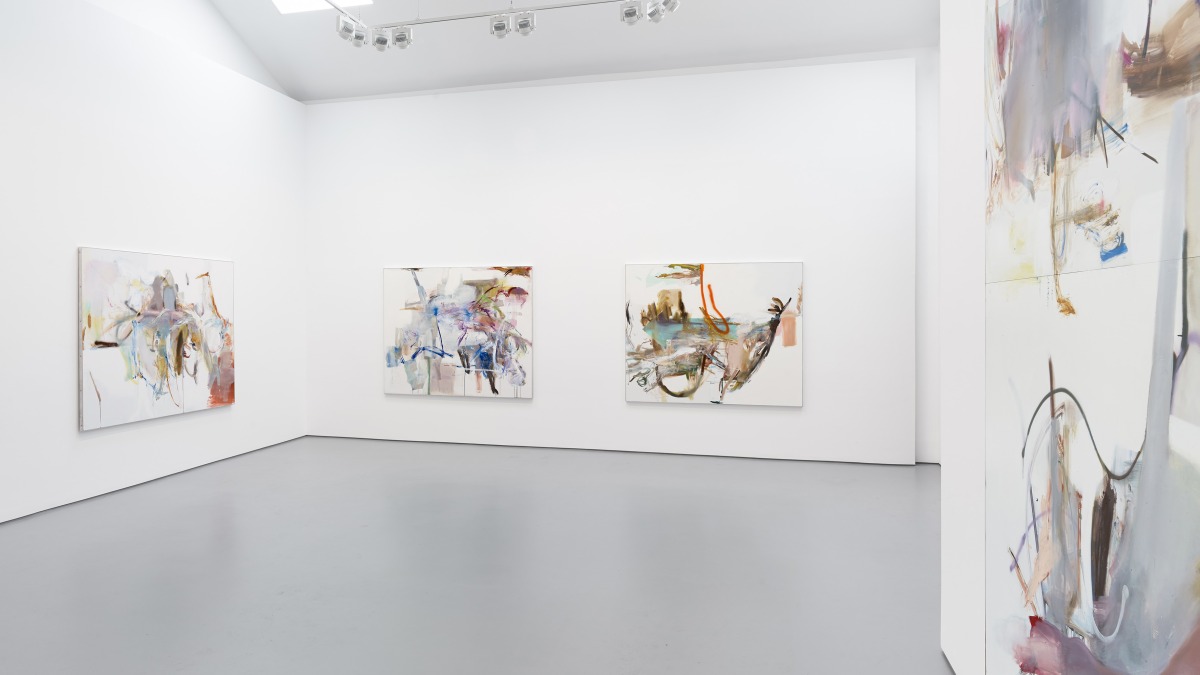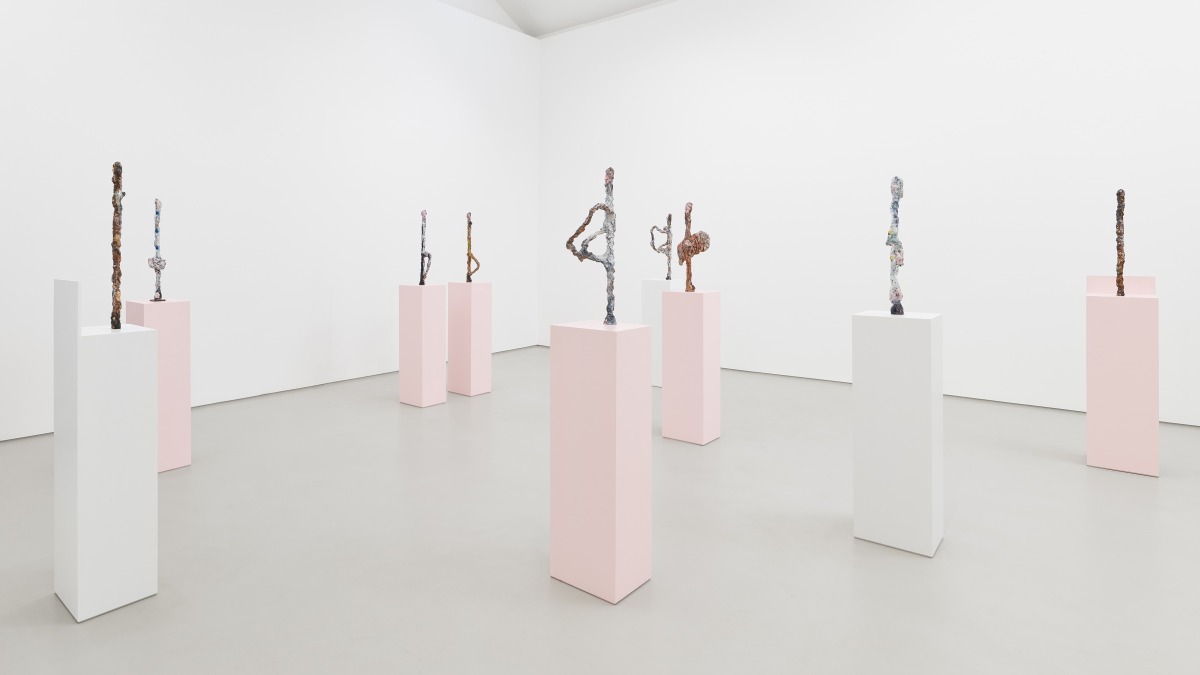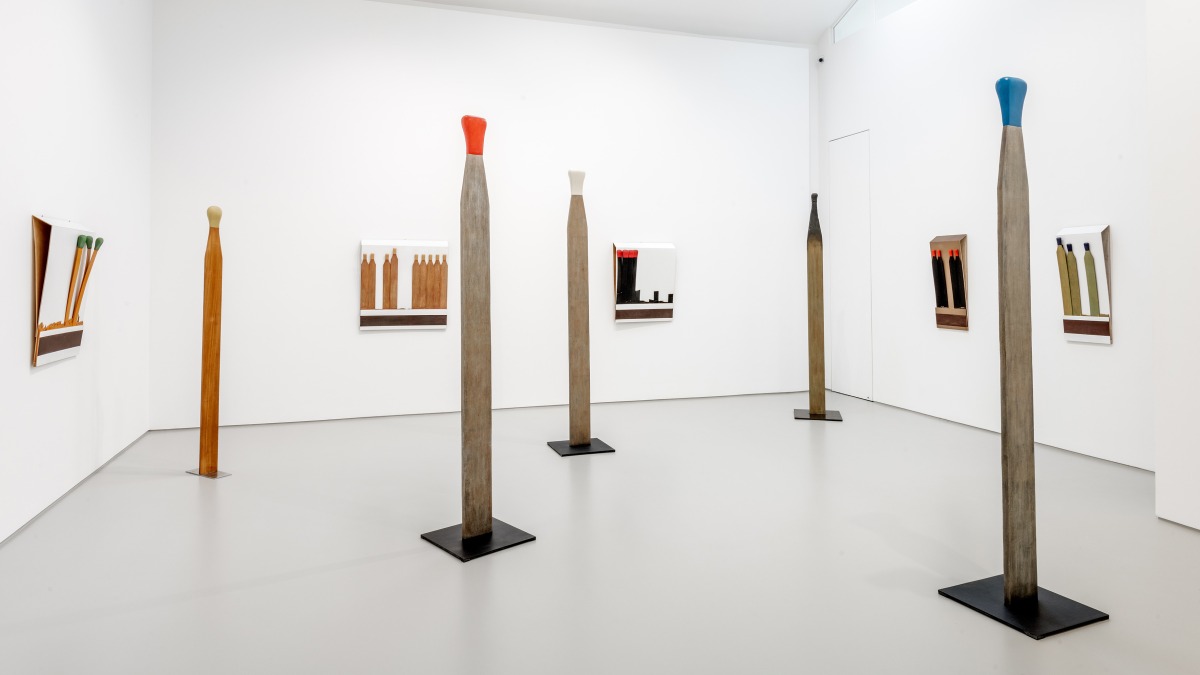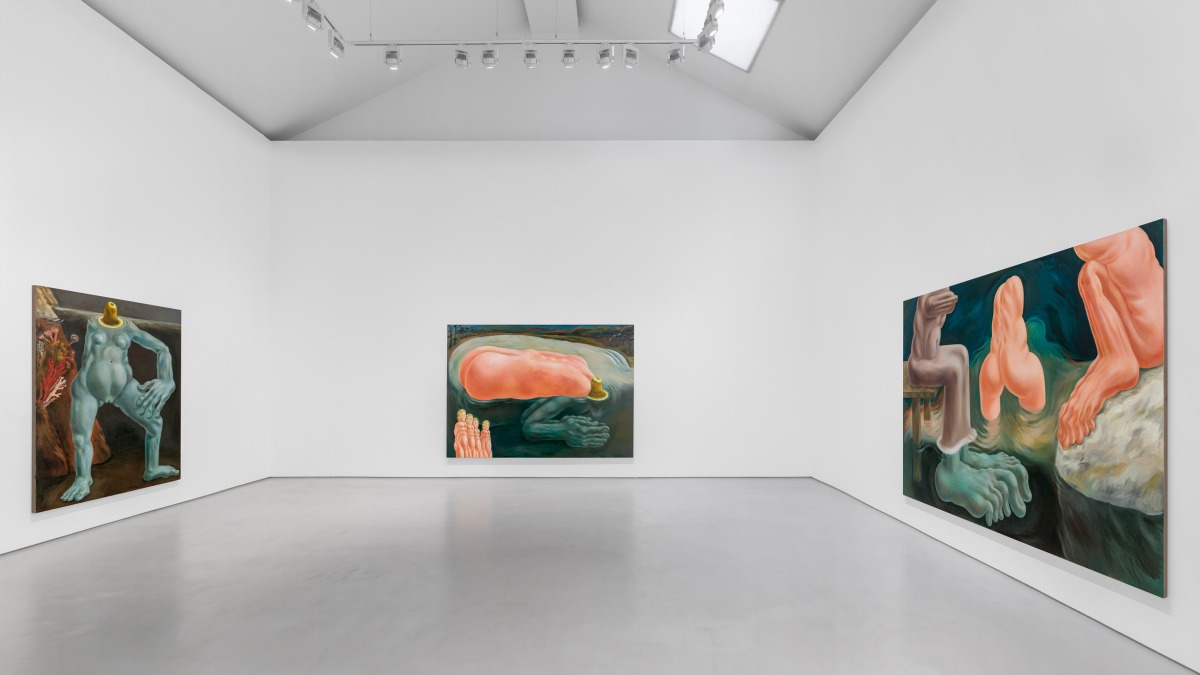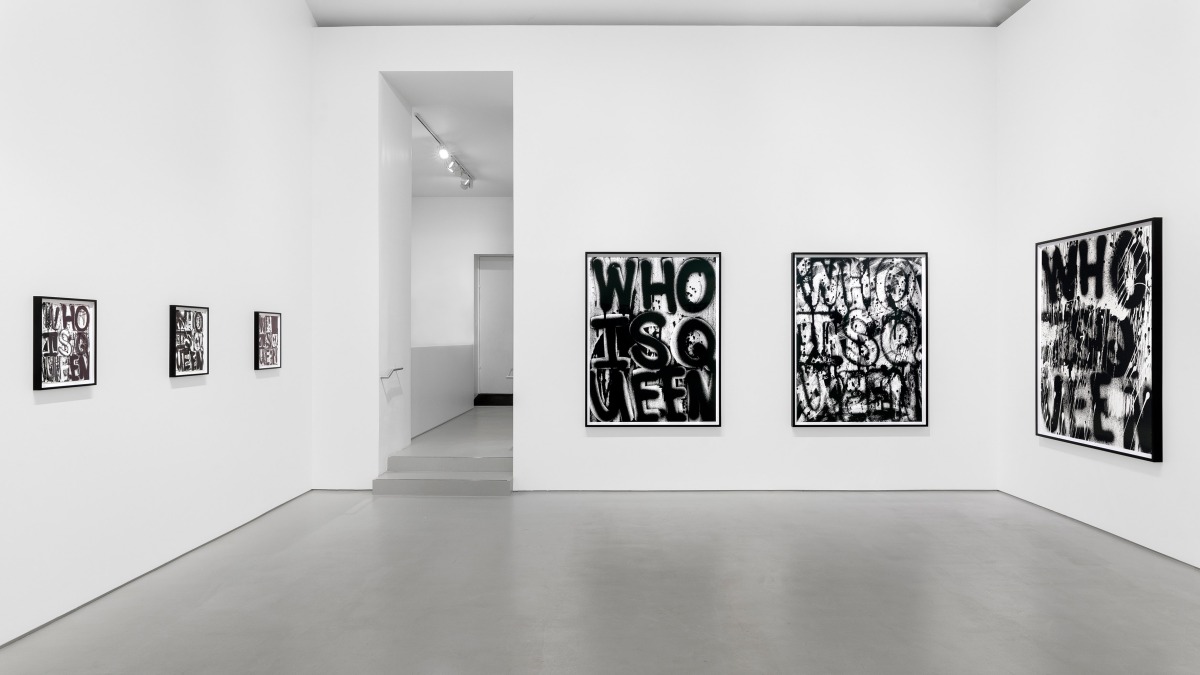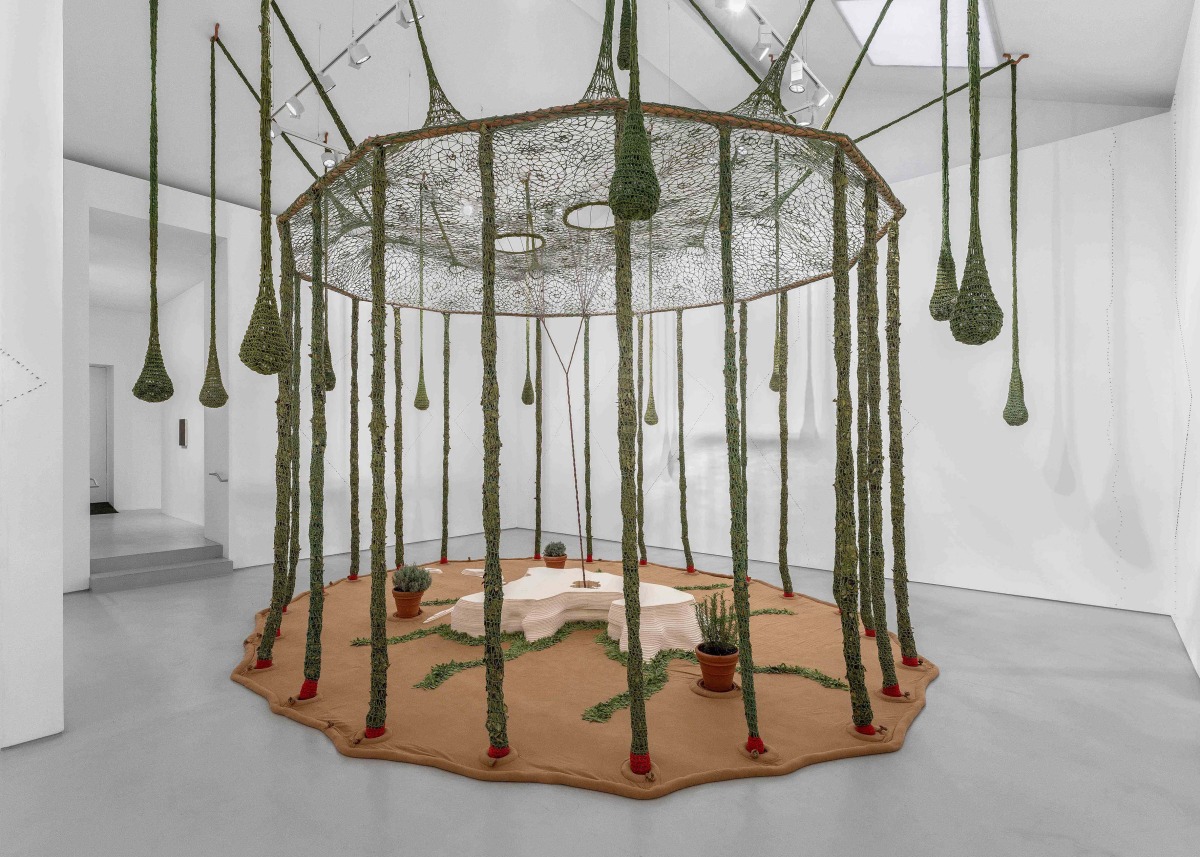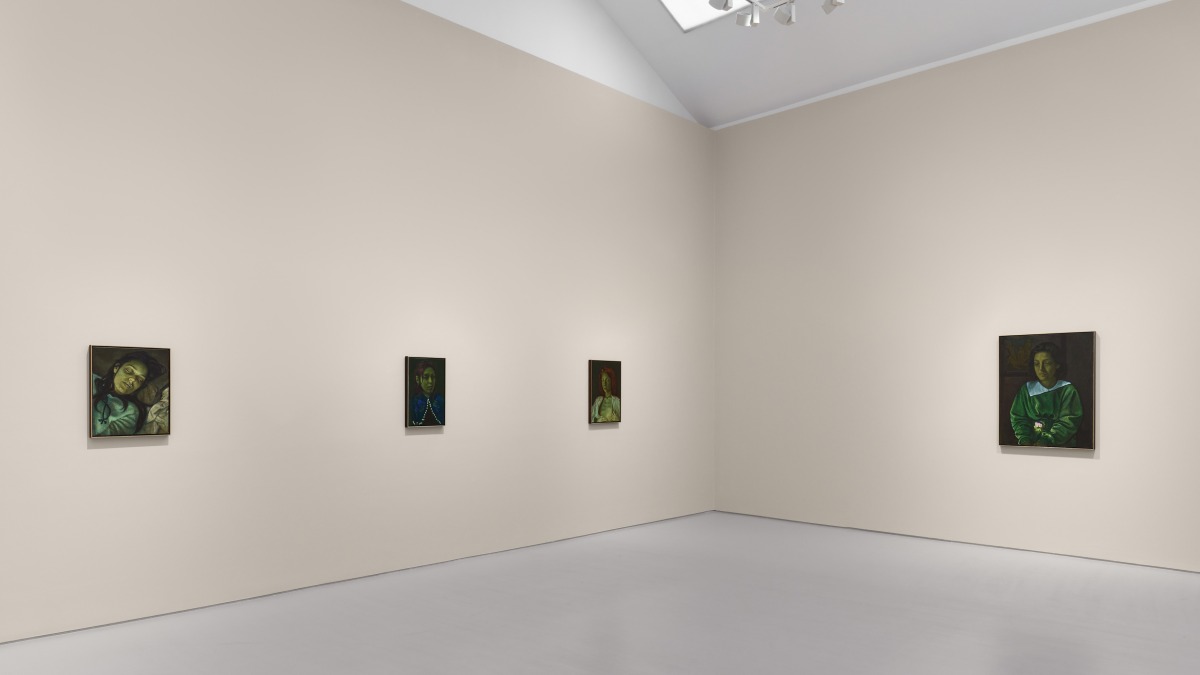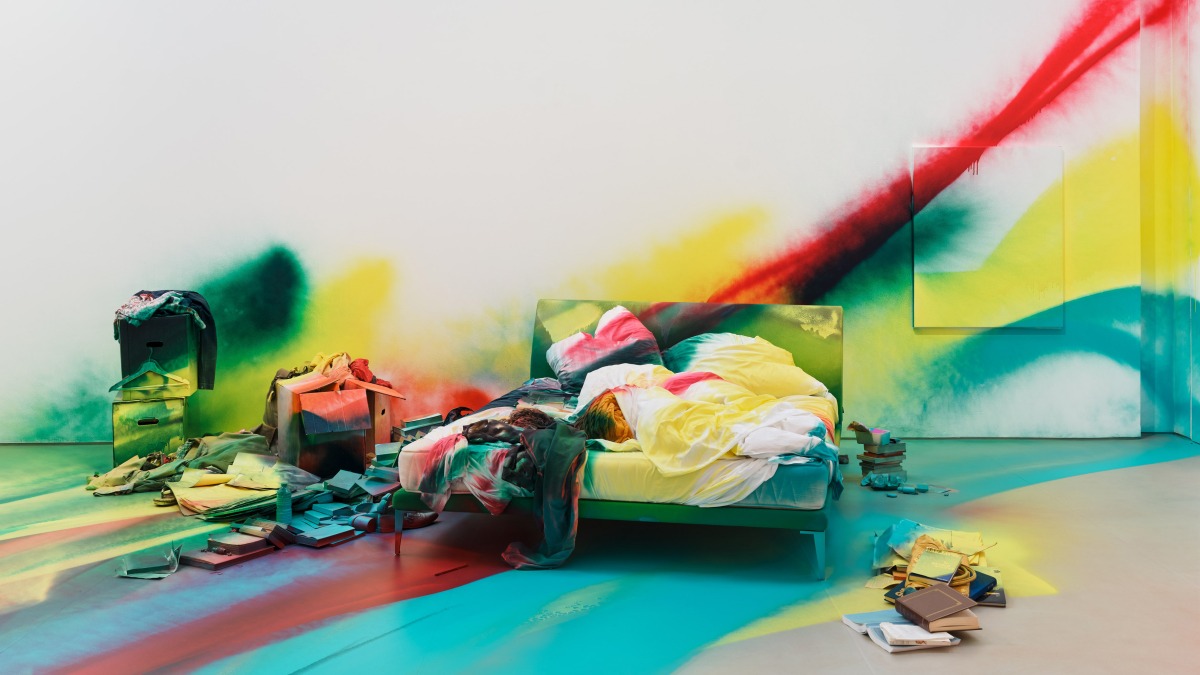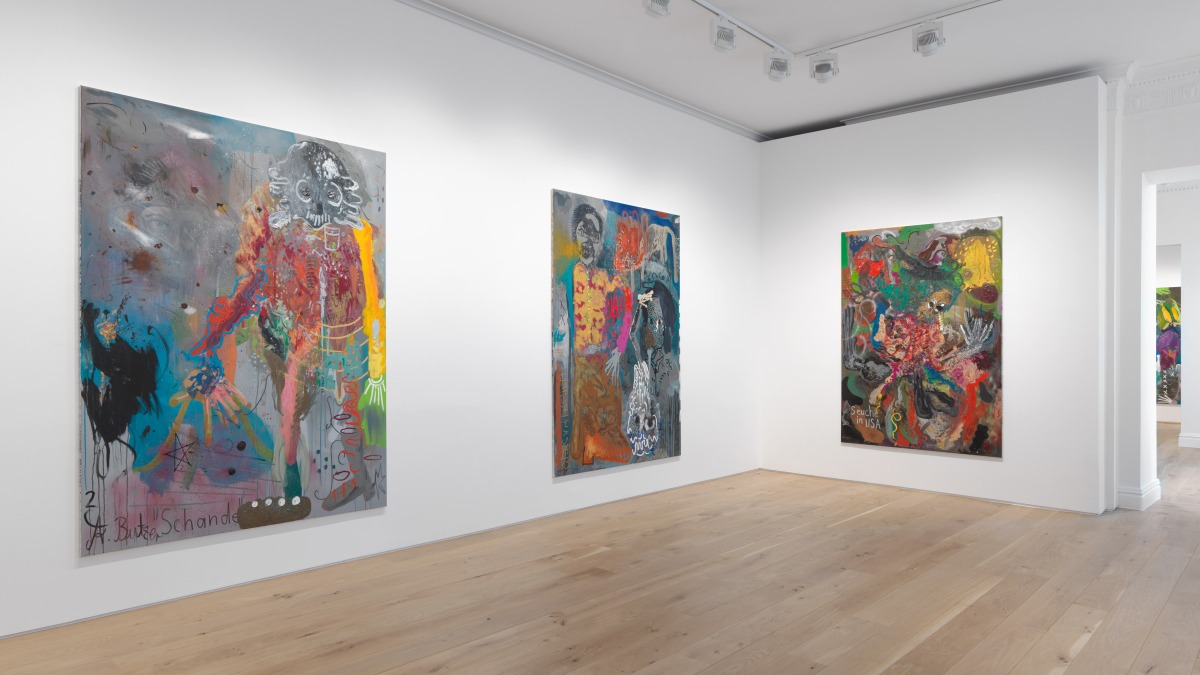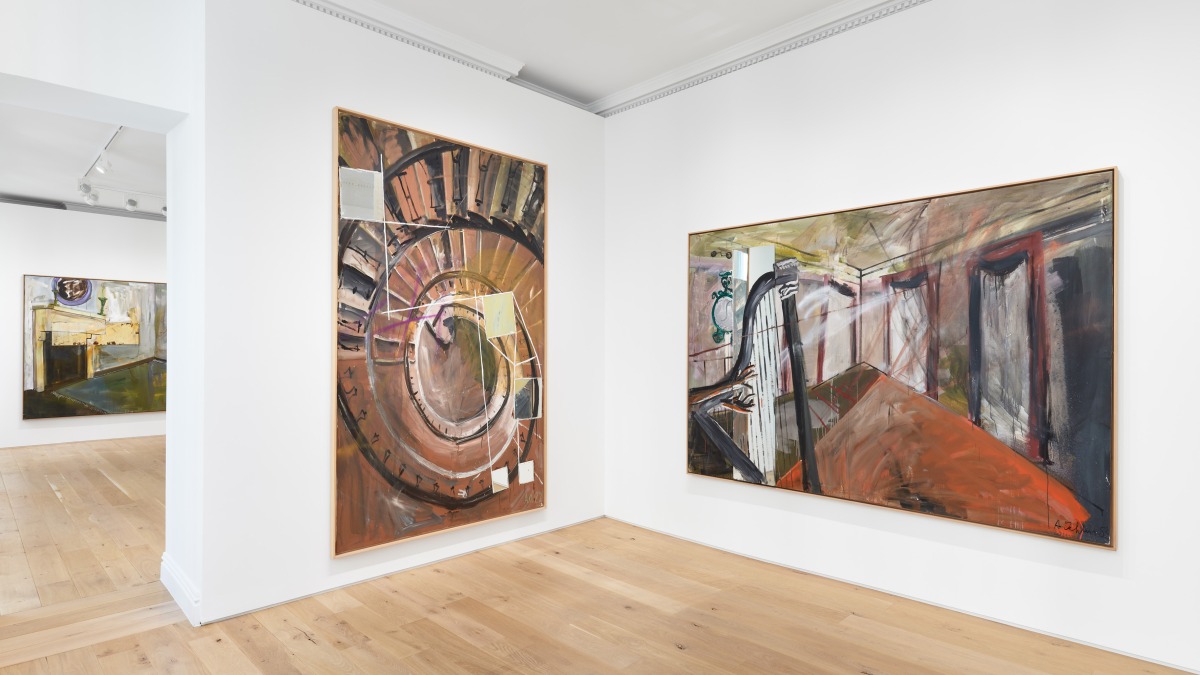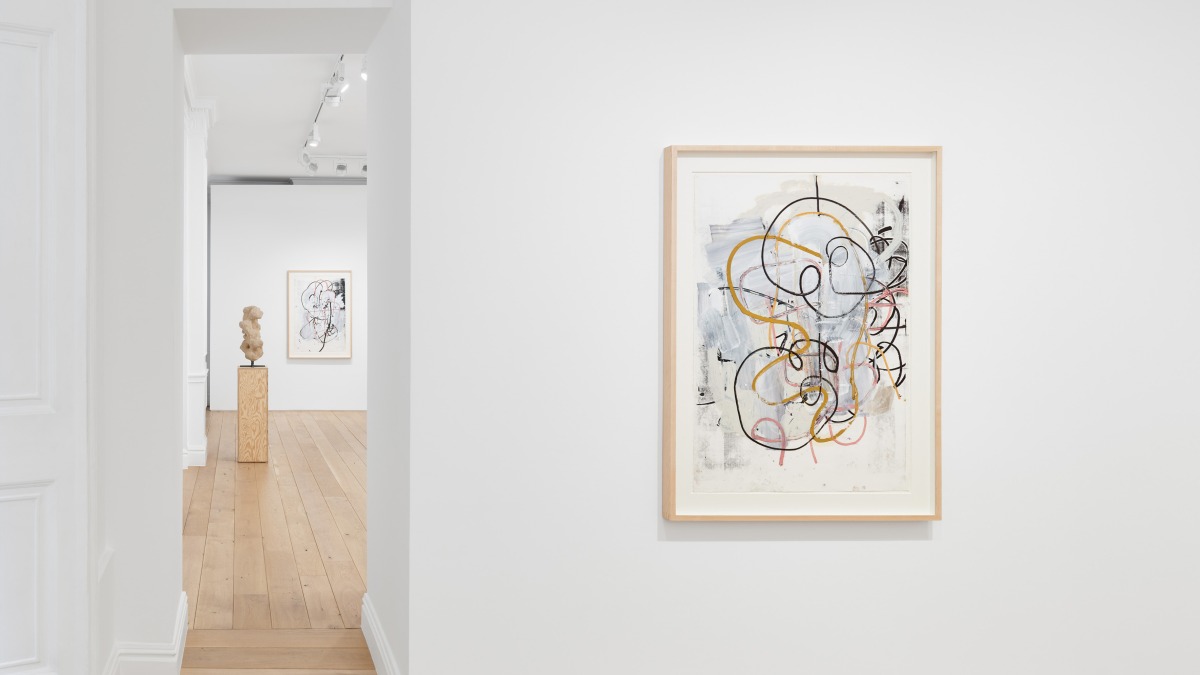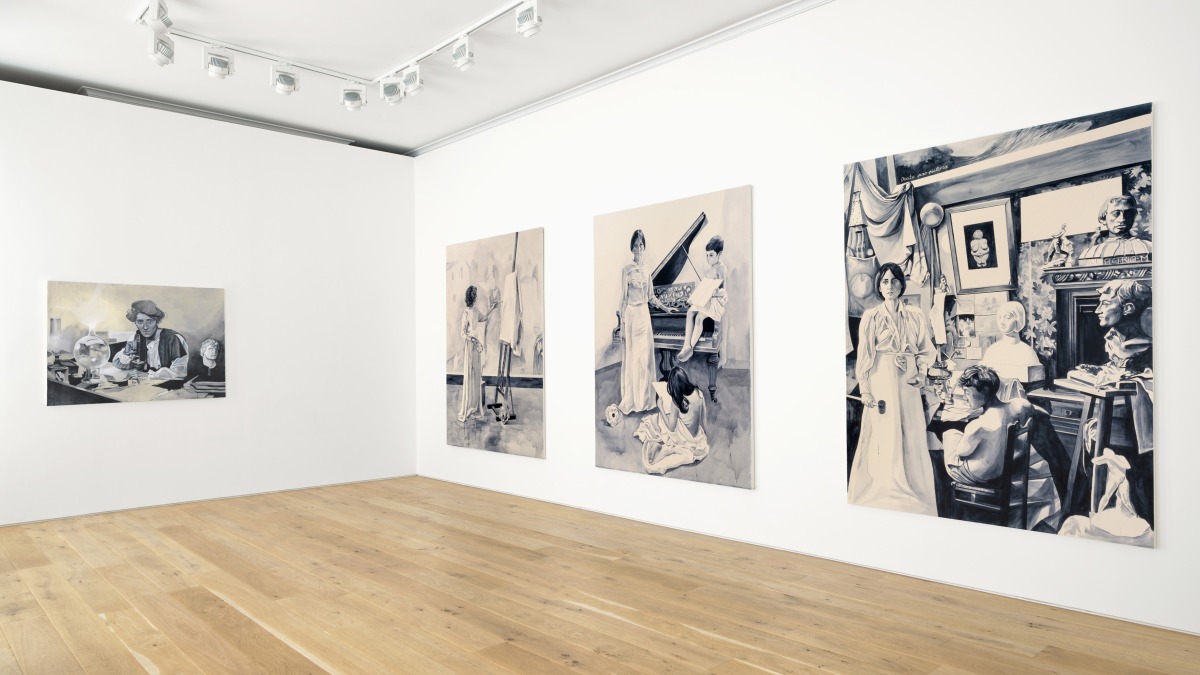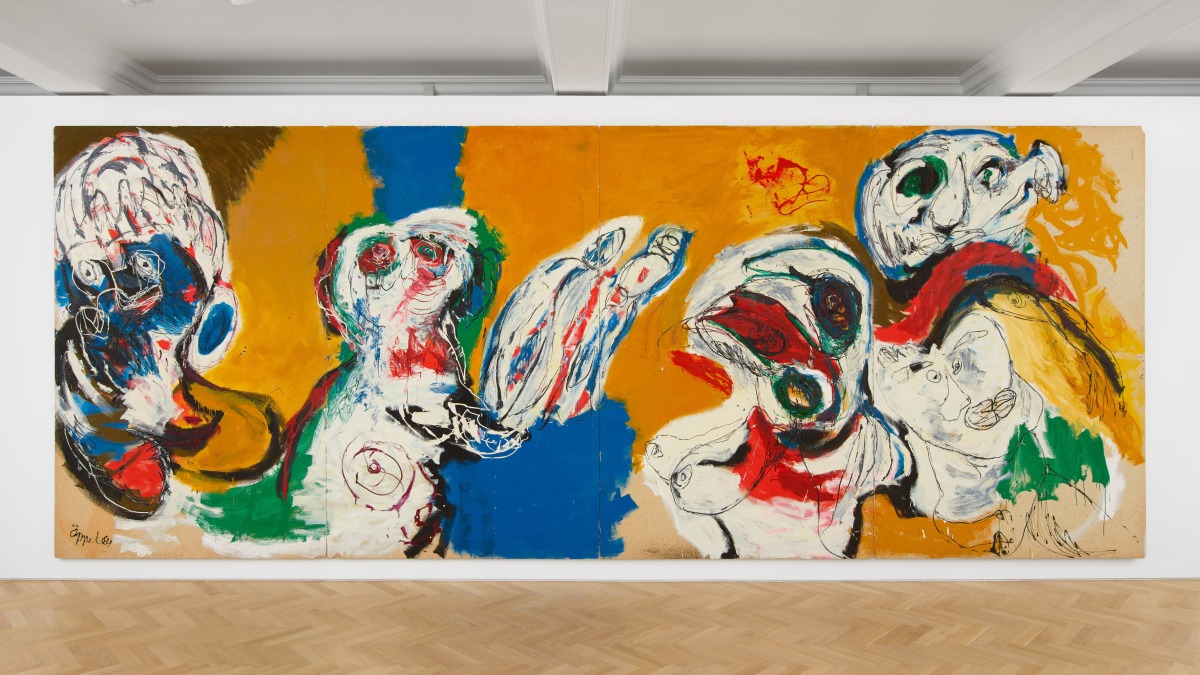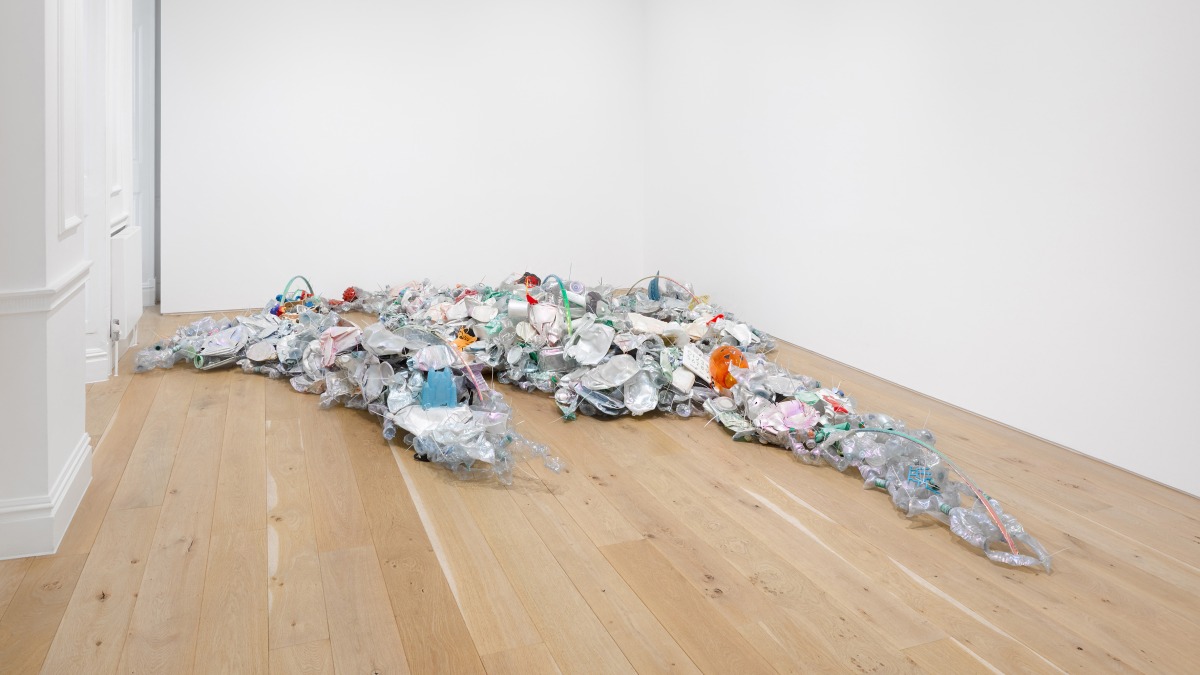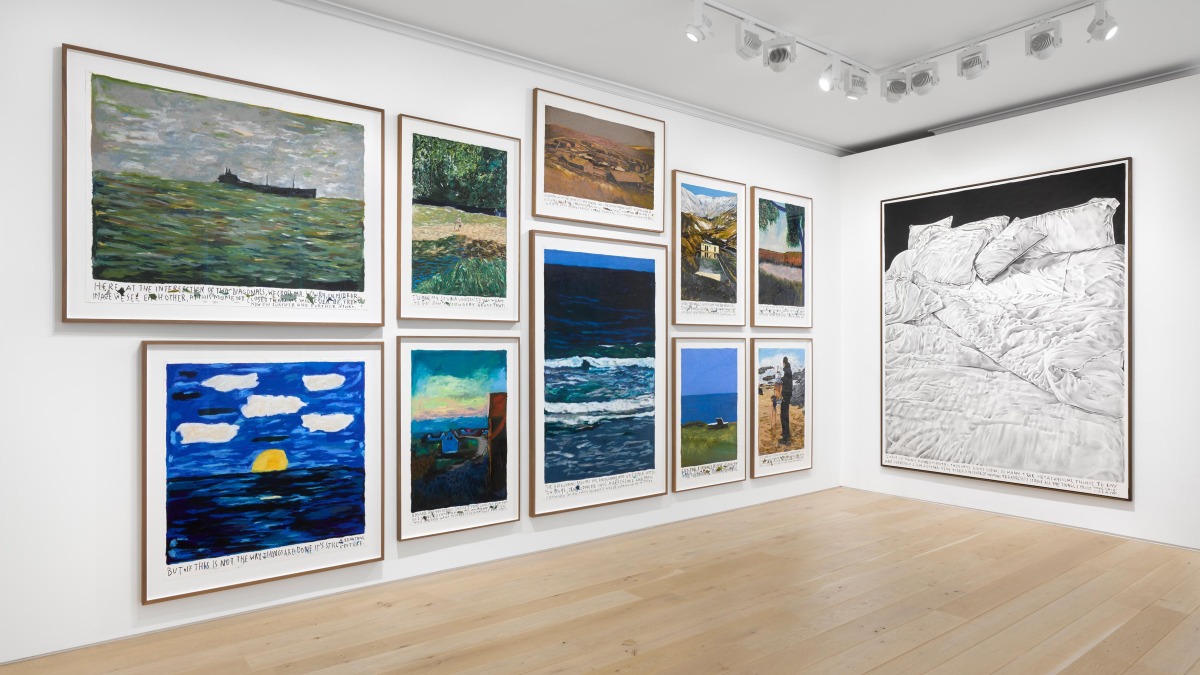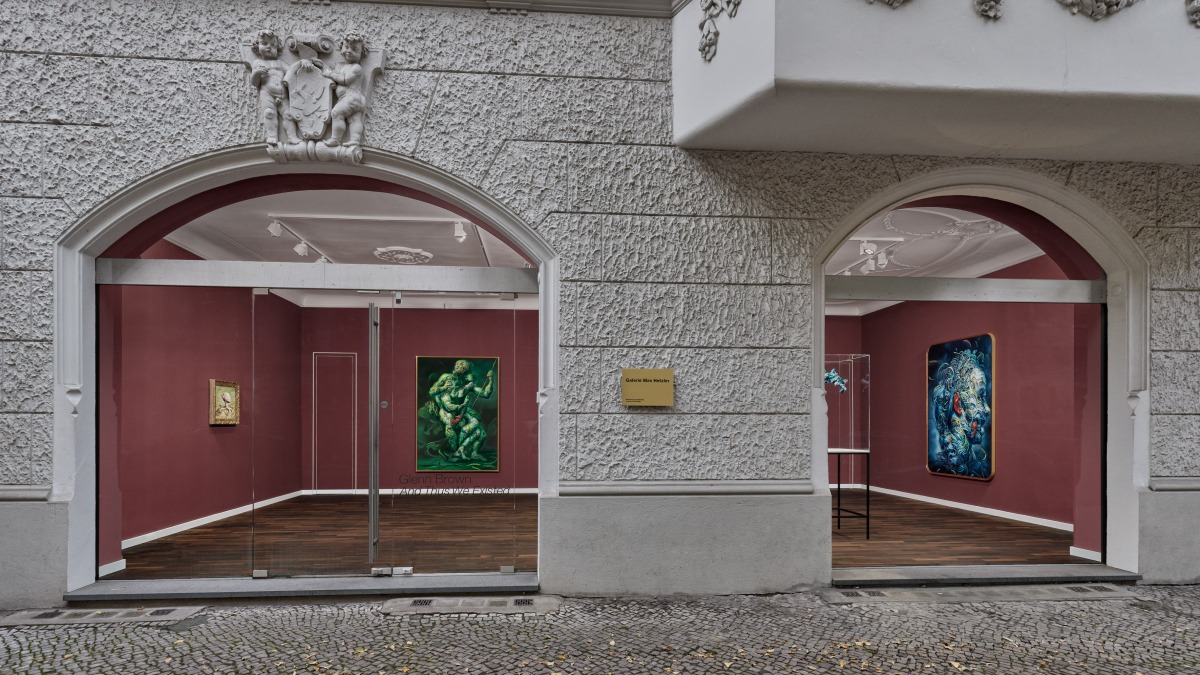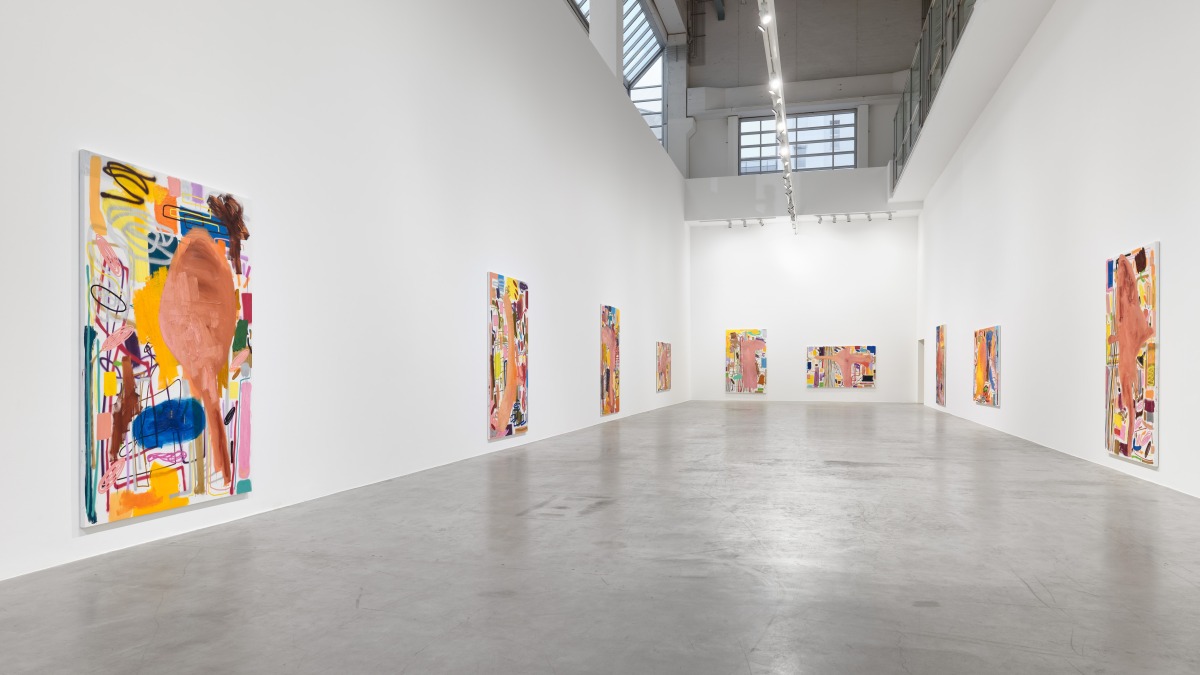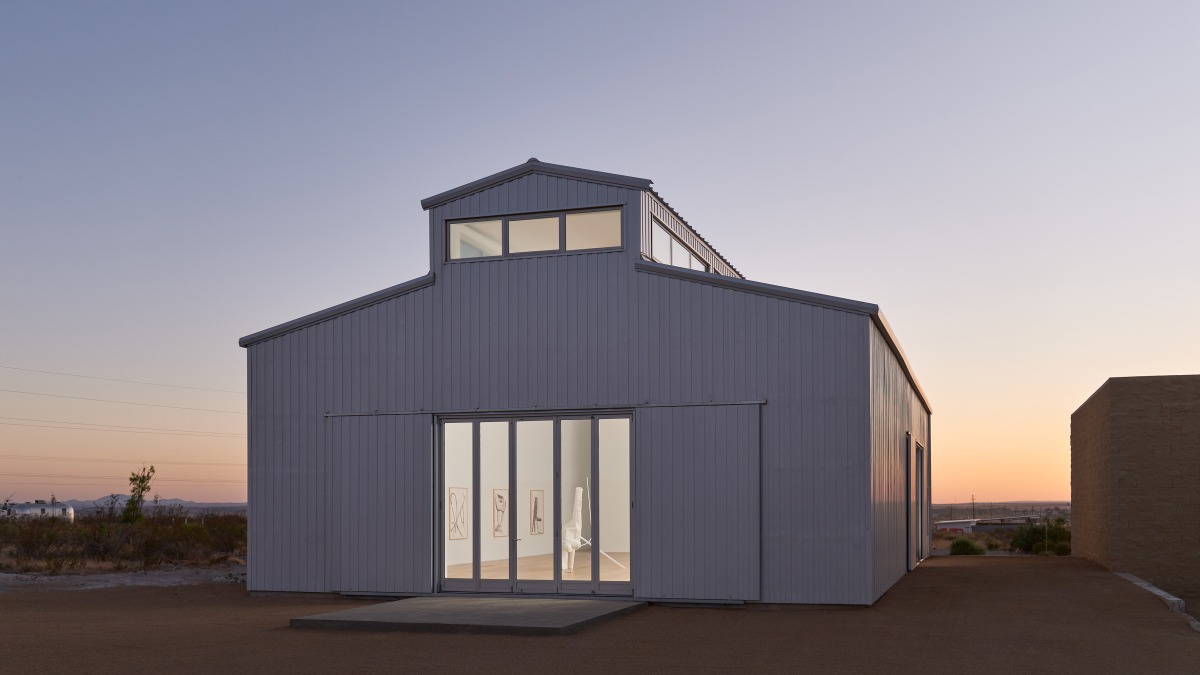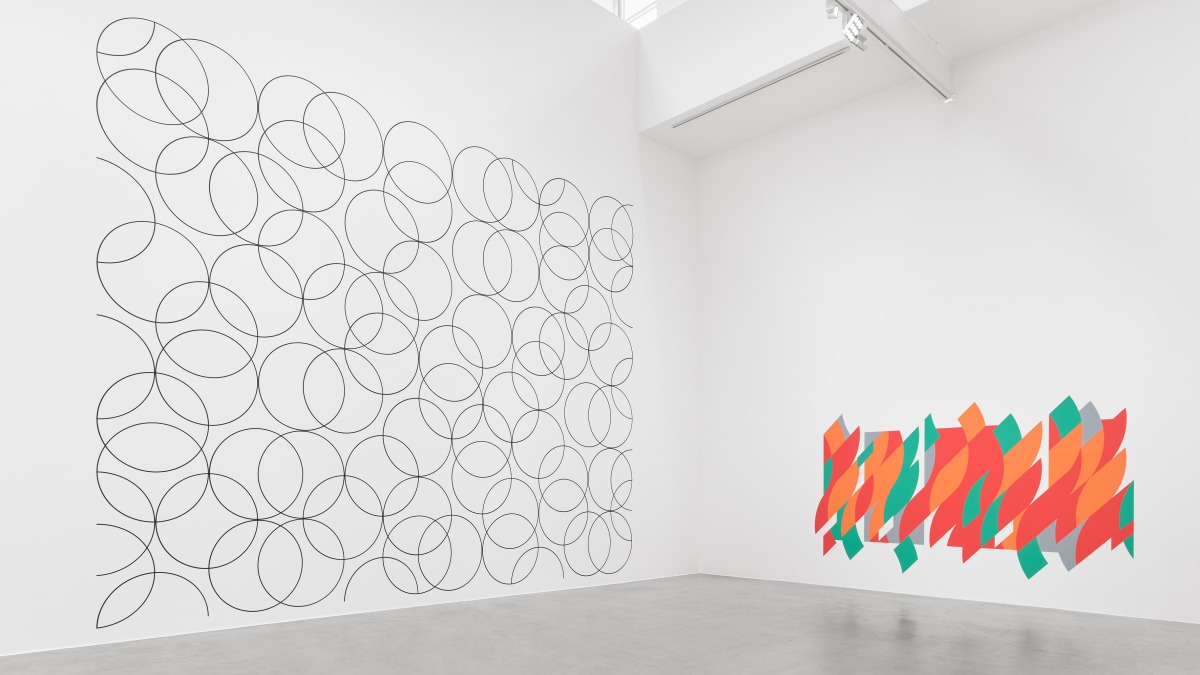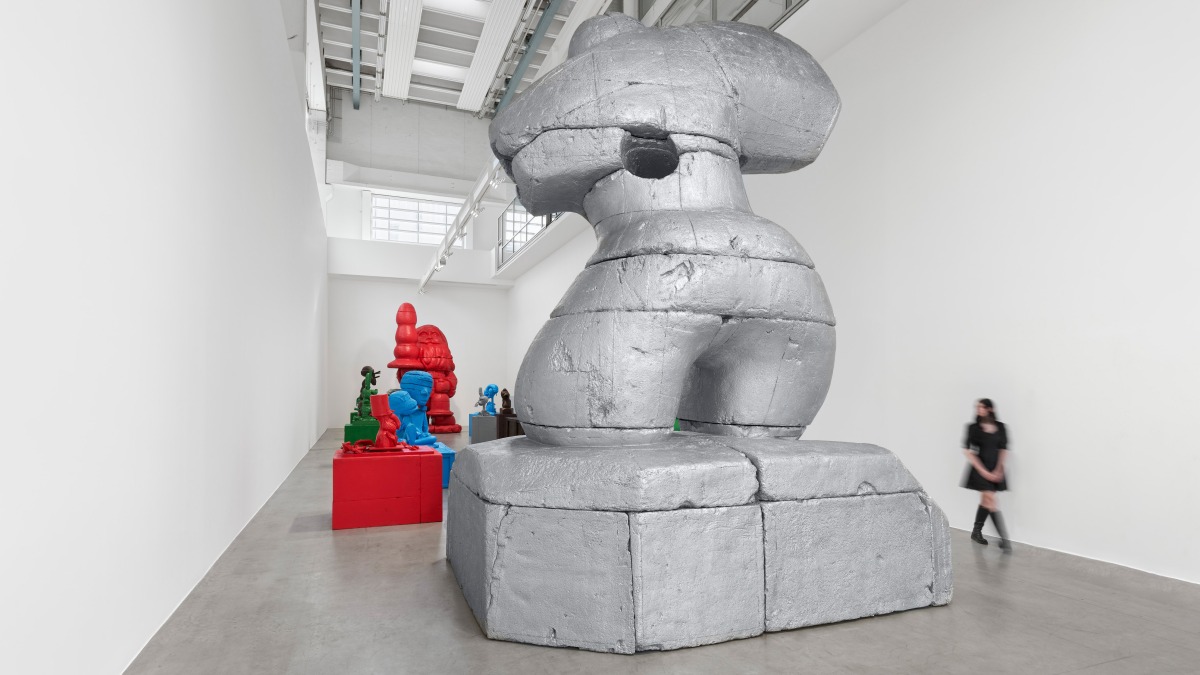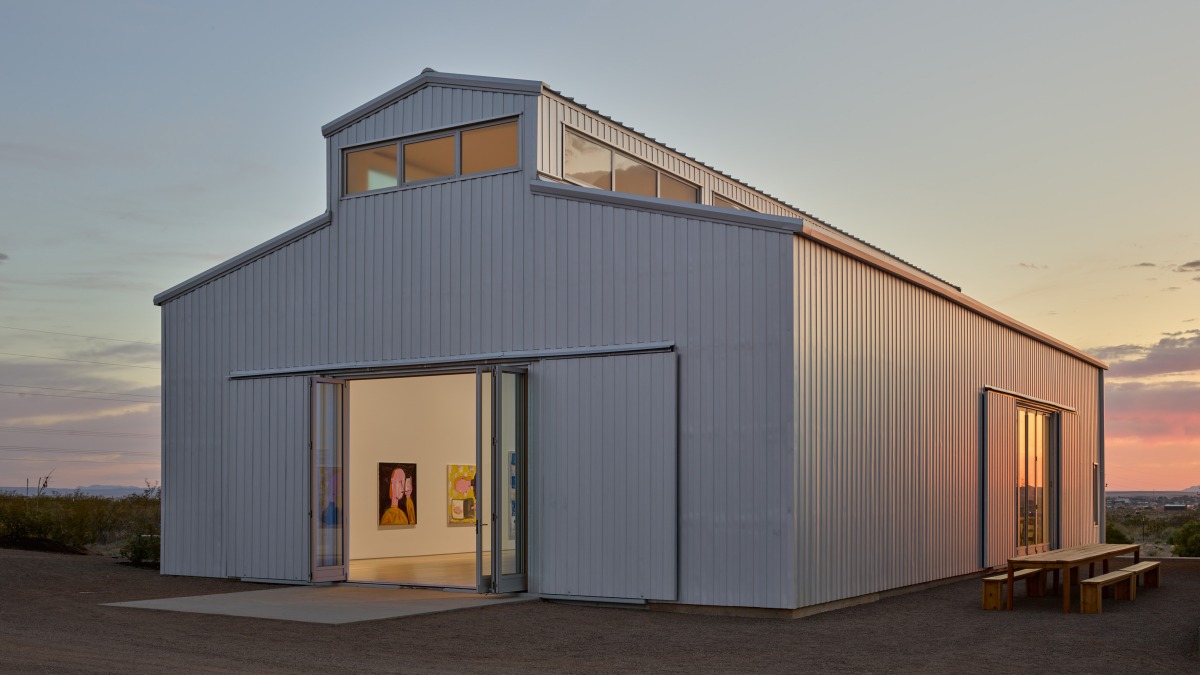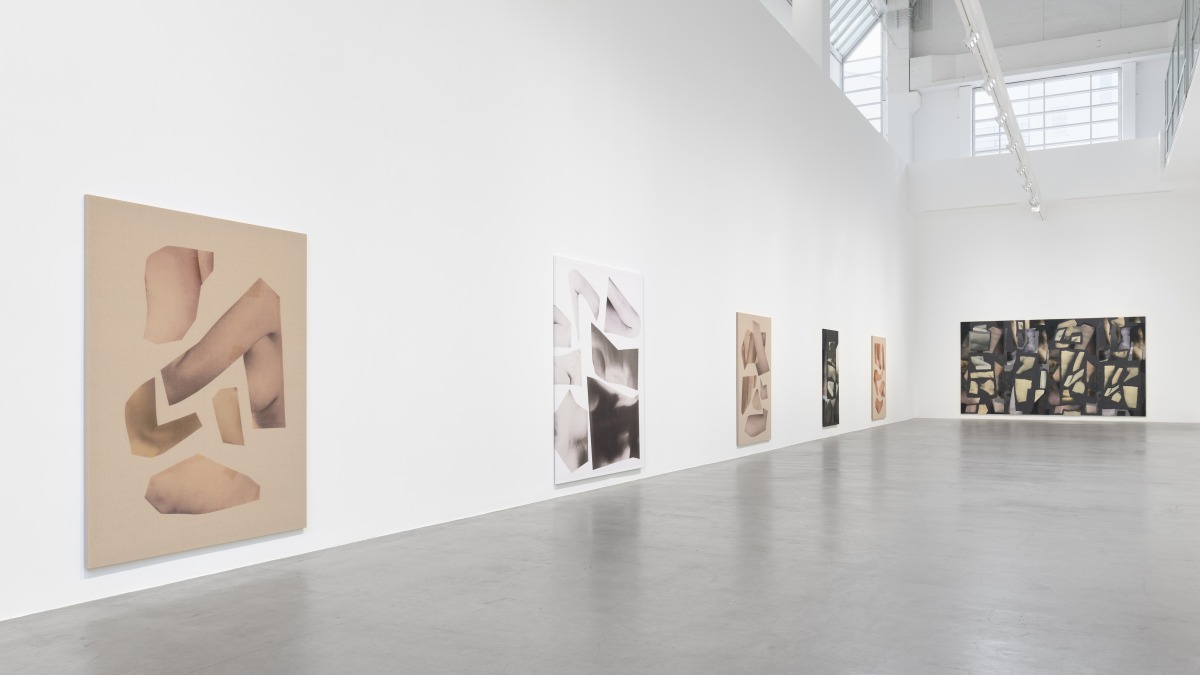Max Hetzler (l.) and Martin Kippenberger (r.), Galerie Max Hetzler, Schwarbstraße, Cologne, 1983. Photo: Wilhelm Schürmann
About
Galerie Max Hetzler is a global contemporary art gallery representing over sixty artists across six spaces in Berlin, Paris and London, with an exhibition space and artist residency in Marfa. Established in Stuttgart in 1974, in its early years the gallery championed the generation of influential German artists emerging at the time including Albert Oehlen, Günther Förg and Martin Kippenberger and their international counterparts Christopher Wool, Jeff Koons, Robert Gober and Cady Noland amongst others. Over several decades, Galerie Max Hetzler has expanded, having worked with nearly 175 artists and representing a strong core of leading international artists and supporting the legacy of several estates. The gallery’s programme is conceived as a fruitful dialogue between established artists and younger generations; representing a constantly evolving discourse.
Everything began in Stuttgart in 1974 when Max Hetzler opened the Hetzler + Keller gallery, inaugurating his programme with artists from the Rhineland and Stuttgart. The gallery moved frequently – simultaneously or successively occupying several premises. Soon, Hetzler began to bring European and then international artists to Stuttgart, among them Donald Judd and Richard Long, as well as Arte Povera.
Over the next few years a programme was established; in 1981 finding its collective expression in an exhibition whose title did not understate its ambition: Junge Kunst aus Westdeutschland (Young Art From West Germany), presenting work by Werner Büttner, Günther Förg, Martin Kippenberger, Reinhard Mucha and Albert Oehlen amongst others. It was an attempt to define a tendency and set a tone.
Werner Büttner, Martin Kippenberger, Albert Oehlen, Max Hetzler, Zadik, Cologne, 1983. Photo: Franz Fischer (left to right)
Günther Förg (l.) and Max Hetzler (r.)
Max Hetzler (l.) and Martin Kippenberger (r.), Galerie Max Hetzler, Schwarbstraße, Cologne, 1983. Photo: Wilhelm Schürmann
Werner Büttner, Martin Kippenberger, Albert Oehlen, Max Hetzler, Zadik, Cologne, 1983. Photo: Franz Fischer (left to right)
Günther Förg (l.) and Max Hetzler (r.)
In 1983, the gallery moved to Cologne, then the artistic centre of Germany, and exhibited some of the most significant German and American artists of the 1980s. The ten years spent in Cologne were decisive and established Galerie Max Hetzler on the international scene. A small group formed around some of the artists included in Junge Kunst aus Westdeutschland – Werner Büttner, Günther Förg, Martin Kippenberger, Reinhard Mucha, Albert Oehlen and his brother Markus. These artists forged the identity of the gallery and found in it a place of freedom, dialogue and interchange – a space where stances and positions harmonised and conflicted. They also found the influence and willpower of Max. Emulation was key.
‘We were a group without a name, without an agenda. We spurred each other on, and everyone wanted to wow everyone else.’ 1
Albert Oehlen, 2007
By 1988, the gallery had expanded into a building designed by the German architect Oswald Mathias Ungers. Galerie Max Hetzler occupied the ground and first floors while Günther Förg occupied the studio at the top. Förg was responsible for the visual identity of the gallery.
‘Through the gallery there was an exchange, respect and friendship between the individual artists.’ 2
Günther Förg, 2013
The world of art very rapidly broadened its horizons. A particular connection was established between Cologne and New York. In the 1980s, Galerie Max Hetzler presented the work of four American artists of considerable importance: Jeff Koons, Christopher Wool, Robert Gober and Cady Noland.
‘We had a great time in Cologne. We spent hours in this bar, Pink Champagne, and at the Chelsea Hotel, just talking about art. Max was very personally involved with his artists; he used to hang out with them all the time. Was Max an artist at one time? Because he was living almost the same lifestyle with them. His relationship to artists was like brotherhood. In general, there was a sense of bonding, being part of one’s generation. It was very interesting to have this European reference or counterpoint, from my American point of view. I felt we were all connected with each other. I think that Kippenberger and Oehlen would also have considered that myself and Gober, Wool, and different people represented the same type of energies here in New York. We were united in Max’s gallery and from there we started to exhibit together internationally.’ 3
Jeff Koons, 2013
In 1989, Hetzler went into partnership with Luhring Augustine to open a space in Santa Monica, California. He continued to work regularly with two of the most important American contemporary artists: Jeff Koons and Christopher Wool, who had his first solo exhibition at the gallery in 1989.
In 1993, the nomadism typical of Max Hetzler struck again. Following Germany’s reunification, the gallery made its next move to a city full of potential: Berlin.
‘The desire for an intellectual, cultural and political centre was obvious. It could only happen in Berlin (...). For artists, it only makes sense to show in a capital of discourse, a capital with an intellectual climate and the center for the arts.’ 4
Max Hetzler, 2006
If there is only one lesson to be learned from the first twenty years of Galerie Max Hetzler, the “before-Berlin-era”, it is the answer Max invariably gives journalists when they ask him what his guiding vision is: “The programme is the artists.” What one sees is artists from different backgrounds and generations, freely gravitating around this context and forming a kind of nebula. This is the characteristic which has come to identify Galerie Max Hetzler; alongside a quest for the best possible context for shows: throughout the gallery’s history varying from an urban white cube (Zimmerstraße) to a vaulted space beneath a train bridge (Holzmarktstraße), from a factory of immense proportions (Oudenarder Straße) to a former post office (Goethestraße) or repurposed printing press (Potsdamerstraße).
‘I’m very close to Max and he’s had a huge effect on my life. When he’s thinking about a show he invites you to Berlin and shows you the space and you have a lot of time to prepare. I worked really hard to create something for this huge, raw space in Berlin-Wedding. Because I had this time, the exhibition felt a bit like a curated museum show and reflected what was a self-examining, questioning moment in my practice.’ 5
Darren Almond, 2013
The gallery slowly changed over the years, and Max with it. He broadened the gallery through the artists to new scenes like Turkey, Brazil or Palestine. He has done a great deal to establish and secure the place of Berlin on the map of contemporary art by relying on a method successfully tested since the 1970s: cooperation.
In May 2014, the gallery opened a new space in Paris, with an exhibition of Albert Oehlen, thirty-three years after his first exhibition at Galerie Max Hetzler.
The gallery’s story continues in London, where it inaugurated a new space in 2018 with an exhibition of early paintings by André Butzer. Situated in the heart of Mayfair, a historic district for the arts, the London space enables Galerie Max Hetzler to continue its longstanding commitment to exhibiting the work of contemporary artists across generations.
In 2020, Galerie Max Hetzler opened its third space in Berlin, a street level gallery in a magnificent art nouveau building at Bleibtreustraße 15/16, the former home of a pioneering German avant-garde art dealer Alfred Flechtheim (1878–1937).
In 2021, the gallery inaugurated its latest space in Berlin, at Potsdamer Straße 77–87, a 600sqm space with an impressive glass façade which formerly housed the printing press for Berlin’s daily newspaper Der Tagesspiegel, with an exhibition of new paintings by André Butzer.
In 2022 the gallery established Hetzler Marfa, a new space and artist residency in Texas which opened with an exhibition of works by Albert Oehlen.
Edited excerpt from Underground Geography, a text by Jean-Marie Gallais for the publication REMEMBER EVERYTHING: 40 Years Galerie Max Hetzler.
Endnotes
1. Albert Oehlen (quoted in S. Kippenberger, Kippenberger: The Artist and His Families, Berlin: J&L Books, 2007, p. 246)
2. Günther Förg (quoted in JM. Gallais, ed., Remember Everything: 40 Years Galerie Max Hetzler, Berlin: Galerie Max Hetzler, 2013, p. 96)
3. Jeff Koons (quoted in JM. Gallais, ed., Remember Everything: 40 Years Galerie Max Hetzler, Berlin: Galerie Max Hetzler, 2013, p. 115)
4. Max Hetzler (quoted in A. Lindemann, Collecting Contemporary, Berlin: Taschen, 2006, p. 84)
5. Darren Almond (quoted in JM. Gallais, ed., Remember Everything: 40 Years Galerie Max Hetzler, Berlin: Galerie Max Hetzler, 2013, p. 60–61)
